Freshwater Weekly: February 22, 2020
|
||||||||||||||||||||||
|
||||||||||||||||||||||
|
Blog – Freshwater Future
https://freshwaterfuture.org/uncategorized/freshwater-weekly-february-22-2020/
|
||||||||||||||||||||||
|
||||||||||||||||||||||
|
Blog – Freshwater Future
https://freshwaterfuture.org/uncategorized/freshwater-weekly-february-22-2020/
Great Lakes Echo
http://feedproxy.google.com/~r/GreatLakesEcho/~3/dB7-Ulxvk3I/
If it takes a village to raise a child, imagine how many people it will take to raise the quality of the Great Lakes.
Part of the Alliance’s approach to protecting the Great Lakes is the understanding that we can’t do this alone. We rely on an incredible network of partnerships to build new relationships to tackle water problems and challenges from different perspectives.
In Ohio, Crystal M.C. Davis, the Alliance’s Director of Policy and Strategic Engagement, works to prioritize relationships with local groups that have deep roots in the community. She began with outreach, hosting listening sessions in northern Ohio communities. And, only after listening carefully and hearing community concerns, she partnered with local and state-wide groups to educate and train advocates.
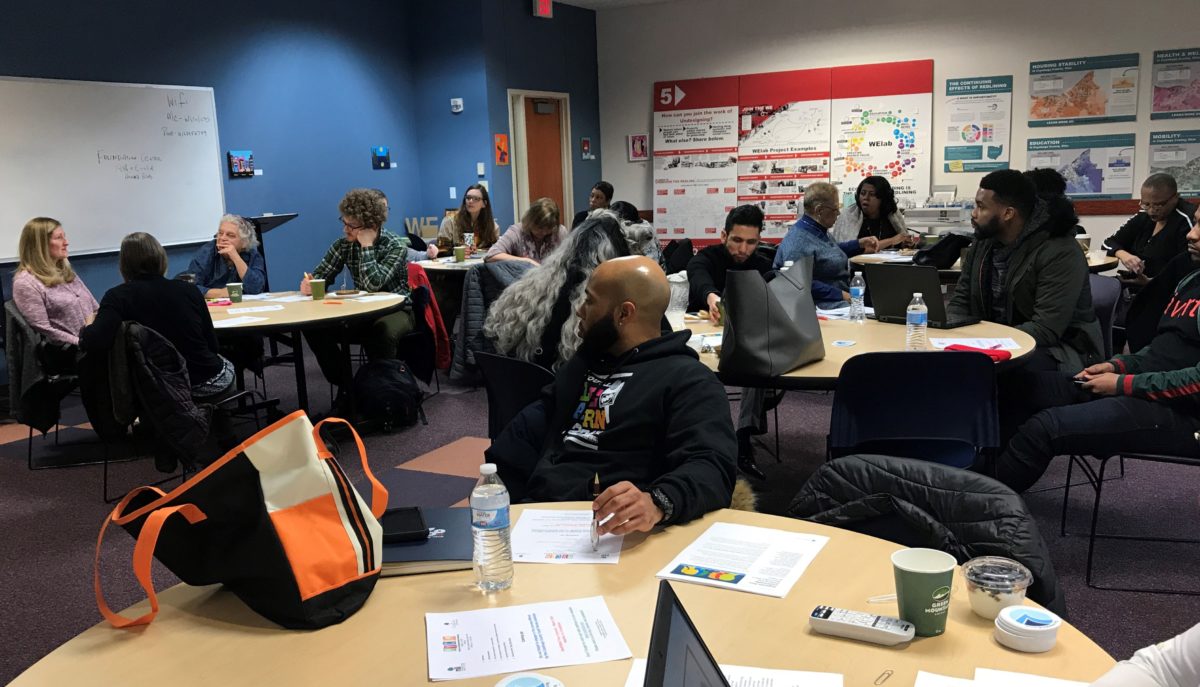
“We’re educating folks to inspire action and build relationships for the long-term,” explains Davis. “When the legislature acts on potential policy, sometimes we have very little time to respond. Educating our communities now enables us and residents to respond more quickly when it’s most important.”
Two of our partners, the Trust for Public Land, and the Environmental Health Watch, focus on more than water issues. The Trust for Public Land works to create Ohio parks and natural areas. They safeguard the state’s natural, recreational, cultural, and agricultural resources and promote park equity for future generations. Environmental Health Watch provides education, advocacy, and direct services to families while also working alongside policy makers to spotlight and confront critical environmental health issues in Ohio. Both appreciate the role water plays in their work and need to address water-related challenges. Working with these partners allows us to build broad coalitions to tackle some of Ohio’s most pressing environmental issues.
In her work training advocates, Davis heard from community groups that they prefer a holistic approach to issues. “Environmental and quality of life issues are connected and talking about them in a connected way, helps elevate them on a priority list,” she said. “We’re talking about land, water, and the impact on disadvantaged communities. That’s all connected.”
Even though Great Lakes communities sit on the shores of the world’s largest surface freshwater lakes in the world, many residents do not have affordable, clean, safe drinking water from their taps. A key focus of our partnerships is with groups working with water issues at the end of the tap. And one of the greatest challenges ahead is addressing lead in drinking water.
It was through community group meetings that Davis connected with Kim Foreman, Executive Director at Environmental Health Watch. Foreman was called to her work earlier in her career. When she was a part-time tutor, she remembers working with a child who could not remember the alphabet. It was the result of lead exposure in the home.
Years later, Kim Foreman is Executive Director at the Environmental Health Watch (EHW), and was recently awarded the Community Collaboration Award from the Ohio Environmental Council for her work on the Lead Safe Cleveland Coalition, among many others accolades and awards. She is highly regarded for her expertise in authentic community engagement and lead issues.
When exposed to lead, the body mistakes it for calcium and iron. Small children take in 50 percent of the lead they are exposed to. Foreman explains the impacts range from a decreased IQ , to lack of impulse control, and anemia. “Lead sits in the bones, leaving a lifelong body burden of lead,” says Foreman.
She works to inform the public. “People know lead is bad,” she says. “But they are [less educated] about the long term effects, what to do about it, or how to protect their families.” She works with community leaders and partners, like the Alliance, to increase awareness of the issue and build capacity to progress policy solutions.
Although the EHW focuses on lead in the home, and the Alliance focuses on it in drinking water service lines, we have the same end goal – eliminate lead contamination on our communities and ensure the financial burden doesn’t fall on the backs of our most disadvantaged communities. We are working together to build a strong, informed, and passionate base of people ready to take action and speak out on this critical issue.
Like the Alliance, Foreman is focusing on how to connect people to policy. “I can’t speak for everyone, we have to build capacity for them to speak for themselves…No matter what the issues are, [people in the community] can work on them, because they understand how decisions get made,” she says.
Our partnership with the Trust for Public Land (TPL) takes a different approach. The Trust for Public Land has a program called “Great Waters,” which focuses on protecting Lake Erie and Ohio’s watersheds. Watersheds are the land area that channels rainfall to creeks, streams, and rivers, and eventually to outflow points such as Lake Erie. Without healthy land, it is impossible to have healthy lakes, since what goes into the land will run into the water.
“We made our mark by starting to purchase and conserve land as the Cuyahoga Valley National Park,” says Shanelle Smith, TPL’s Ohio State Director. This land purchase protects large areas of land along the Cuyahoga River from development, helping it return to health by keeping natural systems in place. In 2019, the region marked the 50th anniversary of the Cuyahoga River Burning and the rebirth of the river.
“If we’re protecting the land, it helps remediate the river. There are not large developments or encroachment that could threaten the health or comeback of the river,” says Smith. Additionally, the Trust has bought thousands of acres along Lake Erie, protecting the land, which in turn helps improve water quality.
The relation between water and land being undeniable. TLP’s work to protect the land near the Cuyahoga River and Lake Erie has lasting benefits to our health, economy and environment.
Building strong partnerships with groups like Trust for Public Land and Environmental Health Watch, we are developing a multi-prong approach to protect Lake Erie, our local rivers and streams, and the water flowing into our homes.
The post Environmentalism 2.0: Our Holistic Approach in Ohio appeared first on Alliance for the Great Lakes.
News – Alliance for the Great Lakes
News – Alliance for the Great Lakes
https://greatlakes.org/2020/02/annual-report-ohio-partnerships/
Green Bay, WI
https://www.weather.gov/www.weather.gov/grb/spotterschedule
Volunteering is a great way for businesses to support the Great Lakes and provide employees an opportunity to get involved too. The Adopt-a-Beach program helps corporate sponsors engage in philanthropy, increase team bonding, and enjoy a day at the beach. We spoke to two sponsors about their experience. Answers have been edited for clarity and length.
AMLI Residential is focused on the development and management of luxury apartment communities across the U.S. AMLI has coordinated two annual beach clean ups with Alliance for the Great Lakes, and have scheduled a third in July. They have cleaned up over 500 pounds of trash. We spoke to Marti Smith, manager, administrative services at AMLI about the experience.

AMLI is dedicated to providing opportunities for our employees and residents to be good citizens and give back to the community in which they live and work in charitable and sustainable ways. The Adopt-a-Beach program was a perfect fit for our effort to identify a sustainably-focused volunteer activity for our Chicago corporate and onsite employees to participate in together.
With a focus on sustainability, our apartment communities are dedicated to using land, water and energy more efficiently. AMLI works hard to provide initiatives and amenities that allow our residents to live more sustainably. AMLI’s national headquarters is located in downtown Chicago and AMLI owns and manages six apartment communities in the metro area. We understand the importance of the Great Lakes to this region and want to do our part in protecting the lakes today and for future generations.
Our AMLI Famli Volunteer program is an important part of the culture. The program helps those in need and builds community and connections among our team members and residents. Many of these activities are environmentally and sustainability focused. Whether it’s building a public park, packing items at a local community food bank or organizing a beach clean-up, AMLI is committed to giving back to the cities and neighborhoods we call home.
The Adopt-A-Beach staff is always very helpful and easy to work with! The staff educated and assisted our team by explaining reasons and goals of our activity and communicating what items need to be picked up during the clean-up — and they are always standing by to cheer our team on to do more. Working with Alliance for the Great Lakes has heightened and strengthened AMLI’s focus on sustainability and has been a positive and fun experience for our team.
Our team loves healthy competition so we encouraged our employees to pick up more trash than they picked up the previous year. For our first clean-up, we picked up 236 pounds of trash. Last year, we picked up 262 pounds of trash.
Meijer Grocery Store opened its first store in Greenville, Michigan in 1934. They now operate almost 250 stores in five Great Lakes states. Meijer hosted three Adopt-a-Beach cleanups in 2019 and is slated to do more in 2020. We talked to them about their experience.

Meijer is a Great Lakes retailer. Given the important role that these unique water bodies play in providing recreation, drinking water, economic opportunities, and cultural significance throughout the region, Meijer is committed to protecting them through actions like sponsoring cleanups and supporting organizations like the Alliance for the Great Lakes.
As a family-owned company, Meijer was built on a fundamental philosophy of enriching lives in the communities we serve. As a result, we donate more than 6 percent of our net profit every year to nonprofit organizations throughout the Midwest and sponsor hundreds of other family-friends events that are important to our team members and our customers, including those that help protect our environment.
There was great enthusiasm from the Meijer team members who participated in the Adopt-a-Beach cleanups last year. Many of them were able to bring their families to participate and found that it was a great opportunity to teach their children about environmental stewardship.
Our Meijer team members felt accomplished after seeing the amount of trash they were able to collect during these clean ups.
One Meijer team member remarked that she will never look at a beach the same way again. Now that she has the eye for spotting the small pieces of trash in the sand, she will forever do her part to keep our beaches clean!
These are just two stories of many from our corporate sponsors. Thank you to everyone who has supported the Alliance and the Adopt-a-Beach program. For a complete list of donors, check out our 2019 financials.
The post Giving Back to the Great Lakes appeared first on Alliance for the Great Lakes.
News – Alliance for the Great Lakes
News – Alliance for the Great Lakes
https://greatlakes.org/2020/02/adopt-a-beach-corporate-sponsor-q-a/
For years, Green Bay has been plagued with harmful algae blooms and a deadzone. But on March 5, 2019 at Lambeau Field, the Alliance scored a victory on the path to make Green Bay more blue. Four county executives, representing the surrounding Brown, Outagamie, Winnebago and Fond du Lac counties, and the Oneida Nation signed the Northeast Wisconsin Water Quality Pact.
Oneida Nation Vice-Chairman Brandon Stevens joined Troy Streckenbach of Brown County; Tom Nelson of Outagamie County; Mark Harris of Winnebago County; and Allen Buechel of Fond du Lac County to sign this historic agreement. The agreement signifies their long-term commitment to improving the health of Lake Winnebago and Green Bay.
Green Bay has less than 2 percent of Lake Michigan’s water but receives more than one third of the phosphorus in the whole lake – a recipe for harmful algal blooms. And, every year, Green Bay suffers from a large deadzone, an area of low oxygen devoid of aquatic life, caused by excessive nutrients. All of these nutrients are carried into the water by runoff pollution, also called nonpoint pollution, and the largest single source comes from agricultural lands in the surrounding Fox and Wolf River watersheds, which comprise nearly one third of the state.
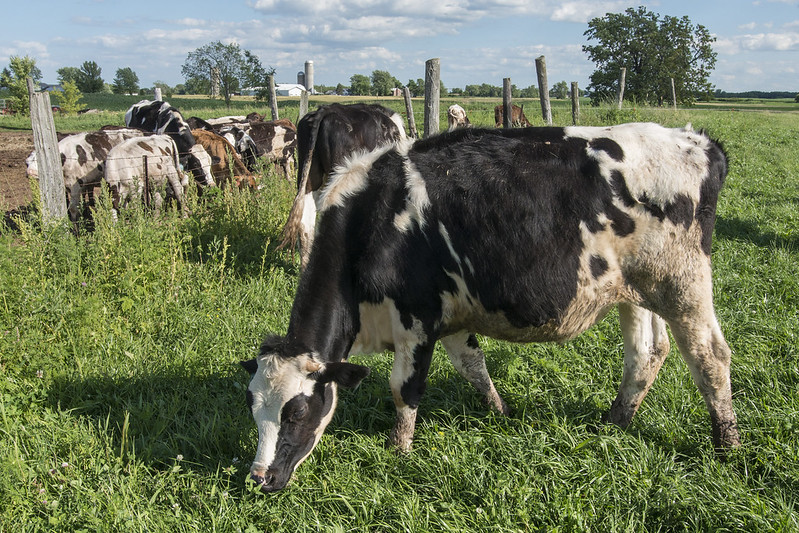
By signing the pact, the officials agreed to prioritize the significant reduction of nonpoint nutrient pollution entering their county’s waterways. The pact commits them to draft and adopt water quality goals, target dates, and metrics that will be incorporated into a management plan and a governance program for the watershed.
Since singing the Pact, the Alliance has worked with the parties to set a goal of a 60% reduction in phosphorus by 2040 with a more aggressive interim goal to achieve 30% by 2030. While the 30 for 30 goal is half of the ultimate goal, scientists and watershed managers expect even then to see significant benefits to the Bay.
“It is anticipated that achieving the significant 30 percent reduction in phosphorus in the Lower Fox River will significantly reduce dead zones, algae outbreaks, sediment plumes and nutrient pollution,” said Alliance Senior Policy Manager Todd Brennan. “In turn, regional stakeholders expect to experience healthier wildlife, improved recreation, less dredging, healthier soils and improved economic prosperity.”
The agreement was a significant step for the work the Alliance has been doing in the area. Last year, the Alliance held a series of clean water roundtables with farmers, researchers, government officials, business leaders, and more. Participants shared their perspectives on water quality and talked about what they can do to improve it. The roundtables were the first time many of the stakeholders were in the same room together and at the same table discussing Green Bay’s water quality problems. This innovative approach was a key step leading to the new water quality pact.
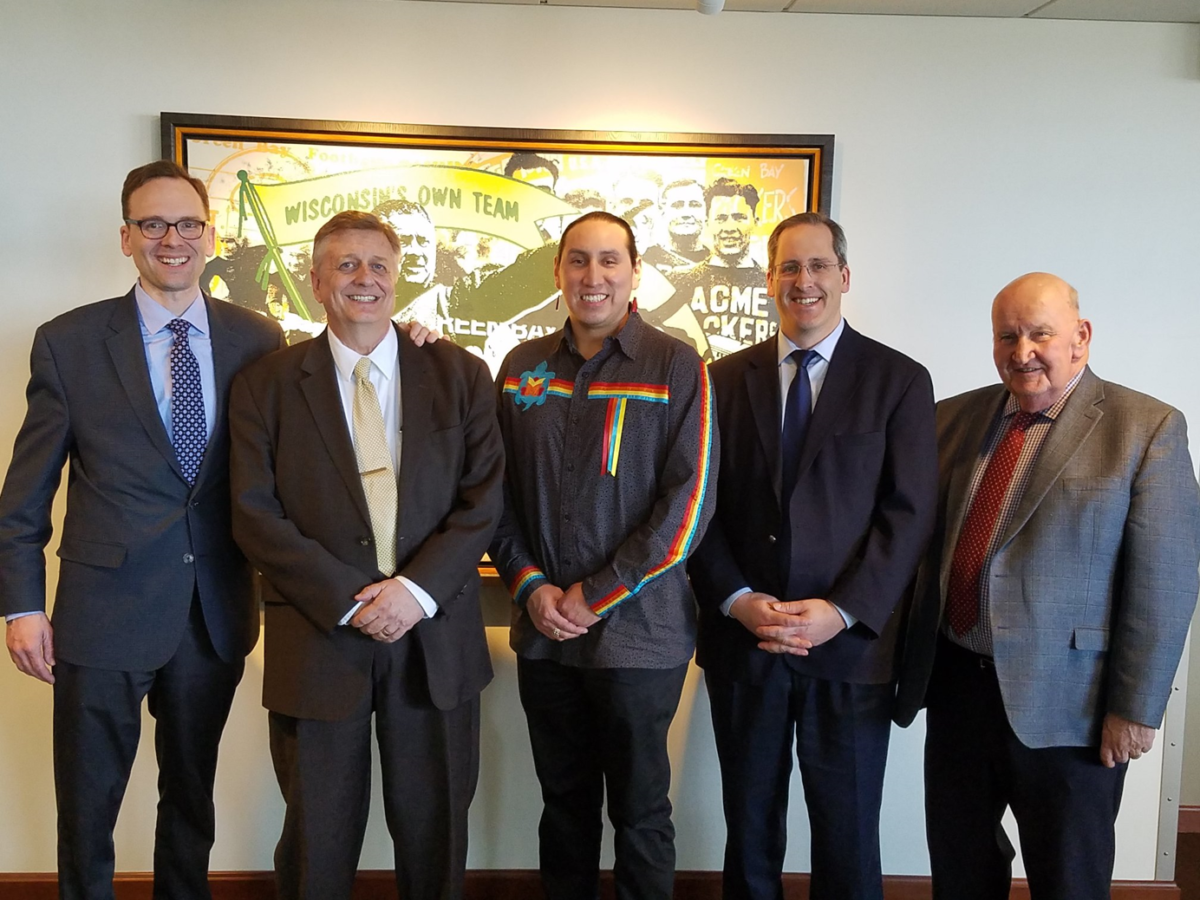
The signers of the pact, who were convened by the Alliance, are all vocal supporters of clean water and improving the watershed.
“It is our responsibility to ensure that our waterways are protected and maintained. Our Nation’s ancestors have utilized these waters since our arrival in the 1800s. The waters here were clean and pristine… a place where wild rice grew and the fish were abundant. It is our hope that one day these waters will once again be restored,” said Stevens, in a blog on Oneida Nation.
On Facebook, Brown County Executive Troy Streckenbach posted, “Today, I’m pleased to sign the Northeast Wisconsin Water Quality Pact to further highlight a shared vision for clean water in our whole region.”
In an interview with ABC2, Outagamie County Executive Tom Nelson said, “This is going to be good not only here in northeast Wisconsin, but working at best practices and ways in which we can show the rest of the state, the rest of the country.”
The pact is the first step on a long journey of improving the Bay, but through a diverse and regional approach, the Alliance is optimistic about our work for the blue future of Green Bay.
The post Green Bay’s Blue Future appeared first on Alliance for the Great Lakes.
News – Alliance for the Great Lakes
News – Alliance for the Great Lakes
https://greatlakes.org/2020/02/annual-report-green-bay-pact/
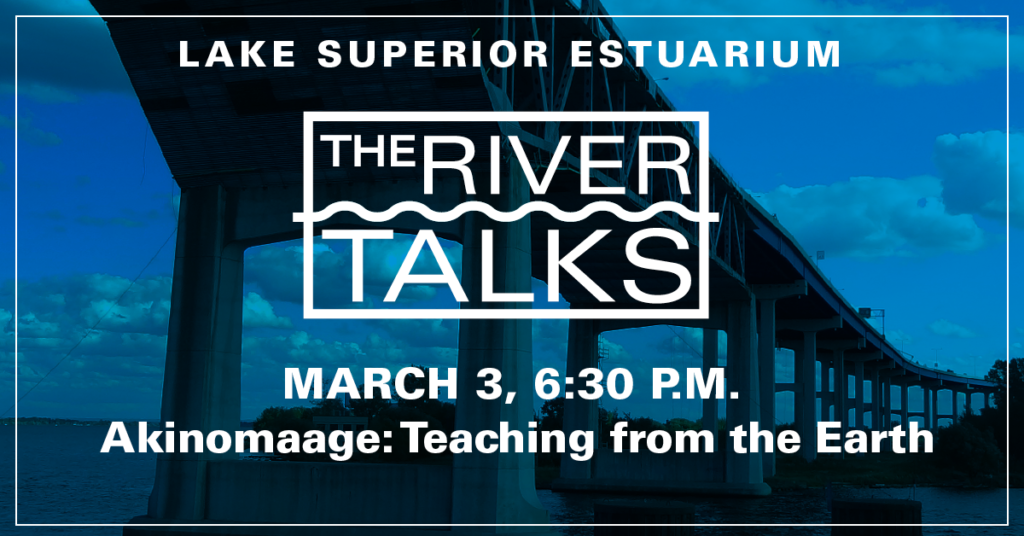 The River Talk series continues this month, but will be held in a different location and day of the week. At 6:30 p.m. on Tuesday, March 3, in the French River Room 1 at the Duluth Entertainment Convention Center (350 Harbor Drive, Duluth, Minnesota), Vern Northrup, member of the Fond du Lac Tribe of Lake Superior Chippewa, will present “Akinomaage: Teaching From the Earth.” Northrup will discuss how he uses photography as a tool to educate both himself and viewers about the rhythms of nature, the preservation of tradition, and the relationship between resilience and sustainability.
The River Talk series continues this month, but will be held in a different location and day of the week. At 6:30 p.m. on Tuesday, March 3, in the French River Room 1 at the Duluth Entertainment Convention Center (350 Harbor Drive, Duluth, Minnesota), Vern Northrup, member of the Fond du Lac Tribe of Lake Superior Chippewa, will present “Akinomaage: Teaching From the Earth.” Northrup will discuss how he uses photography as a tool to educate both himself and viewers about the rhythms of nature, the preservation of tradition, and the relationship between resilience and sustainability.
Northrup’s talk is being held in conjunction with the St. Louis River Summit. River Talks are free and open to all, however, participants will need to pay a DECC parking charge. Refreshments are provided.
The Lake Superior National Estuarine Research Reserve and the Minnesota and Wisconsin Sea Grant programs offer this series of informal evening talks about the St. Louis River Estuary.
Other River Talks will be held on April 8 and May 13. For more information, visit go.wisc.edu/4uz720. If you miss a talk, visit Wisconsin Sea Grant’s blog for a summary.
News Releases – Wisconsin Sea Grant
News Releases – Wisconsin Sea Grant
https://www.seagrant.wisc.edu/news/akinomaage-teaching-from-the-earth/
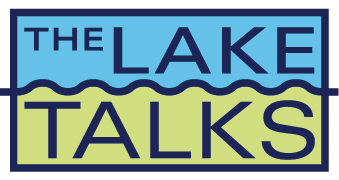 Wisconsin Sea Grant is launching a new series of free, public talks called “The Lake Talks.” The talks will take place in communities on or near Lake Michigan and touch upon issues of importance to the Great Lakes.
Wisconsin Sea Grant is launching a new series of free, public talks called “The Lake Talks.” The talks will take place in communities on or near Lake Michigan and touch upon issues of importance to the Great Lakes.
The first event will be held at the Neville Public Museum (210 Museum Place) in Green Bay on Wednesday, March 4, from 6:30 to 7:30 p.m. The topic is “Setting Sail for Great Lakes Learning.”
Admission to the Neville Museum is free for Brown County residents after 5 p.m. on the first Wednesday of each month, so area residents will be able to visit the museum and attend the talk for free.
“Setting Sail for Great Lakes Learning” will be a panel with time for audience questions. The speakers will be three educators who set sail from St. Ignace, Mich., in August 2019 aboard a replica 19th-century schooner, the Denis Sullivan.
Over the course of six days, they sailed to Duluth, Minn., along with 13 other educators. Their main purpose was a shipboard science workshop focusing on Great Lakes ecology, water quality, and awareness of tribal approaches to research and natural resource management.
While engaging in a busy schedule of science activities, the educators were also expected to pull their weight as crew members sailing the three-masted schooner, from swabbing the deck to keeping watch at night.
Attendees will hear from panelists about the challenges and high points of this unique voyage and how it enhanced their classroom instruction once they got home. Panelists are: Kelly Koller, Howard-Suamico School District; Dave Landers, Pulaski Community Middle School; and Christina Dzwonkowski, conservation warden with the Great Lakes Indian Fish and Wildlife Commission.
All are welcome at this event. It will be of special interest to those with an interest in the Great Lakes, sailing, science (including citizen science efforts) and Ojibwe culture.
Future installments of the Lake Talks will take place in Green Bay on May 28 at the STEM Innovation Center on the UW-Green Bay campus, and on May 30 in Kenosha at Public Craft Brewing Co. Those events are also free and open to the public; more details will be released soon on the Lake Talks page.
News Releases – Wisconsin Sea Grant
News Releases – Wisconsin Sea Grant
https://www.seagrant.wisc.edu/news/wisconsin-sea-grant-kicks-off-new-series-of-public-talks-with-march-4-green-bay-event/
|
||||||||||||||||||
|
||||||||||||||||||
|
Blog – Freshwater Future
https://freshwaterfuture.org/uncategorized/freshwater-weekly-february-16th-2020/
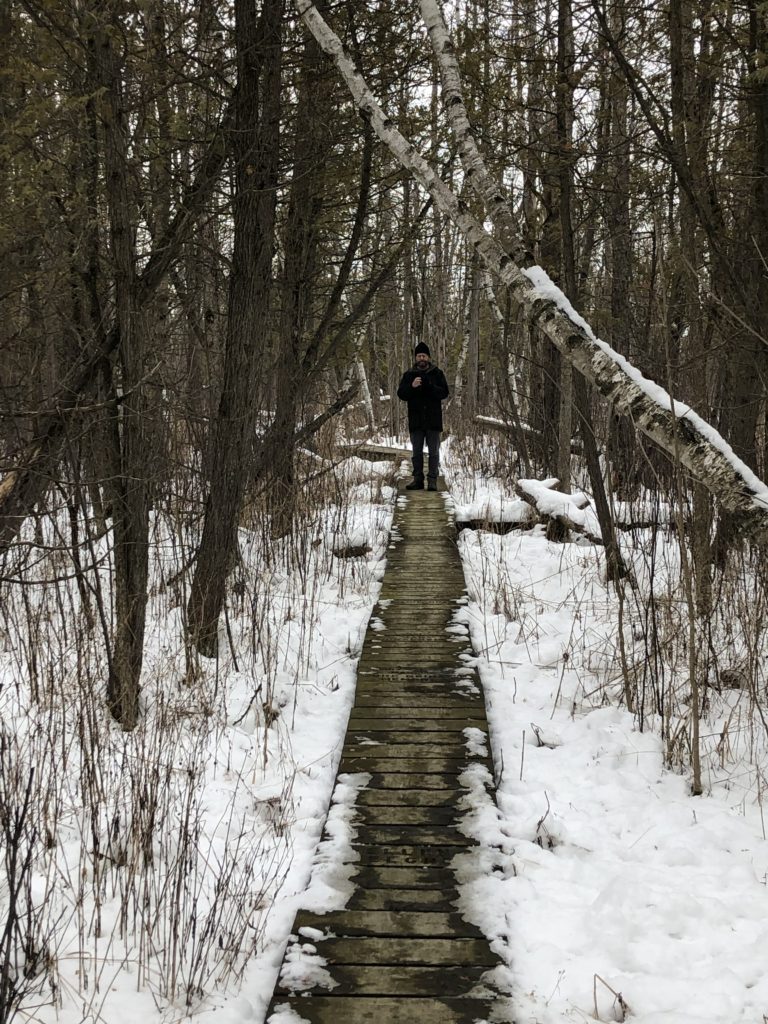
A boardwalk extends into North America’s southernmost string bog, offering a spot for teaching and research. Image by Moira Harrington
I was recently invited to visit the 320-acre University of Wisconsin-Milwaukee Field Station at the Cedarburg Bog State Natural Area. It was the last day of January. The tree swallows were absent, instead soaking in the warmth of their winter-migration homes to the south. The frogs were toughing out the cold Wisconsin conditions, buried in mud or hunkered under leaf piles and rocks, remaining inactive. The prairie flowers were likewise dormant, waiting for warmer temperatures before they will again show off colorful petals perched atop long stems.
Amid this winter somnolence, you might presume not much is happening at the field station. That would be inaccurate. The phenology camera is snapping away and adding information to an online dataset international in scope. The lab and its supportive equipment is primed and ready for the 2020 field season. The weather station continues to collect data, contributing in part to a current project funded by Sea Grant’s sister organization, the University of Wisconsin Water Resources Institute.
In addition, the tree swallow transect arrays were in place for when UW-M researcher Peter Dunn returns to continue his work in understanding the relationship between food abundance and breeding.
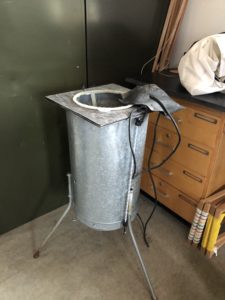
This “bug sucker” captures bugs for a tree swallow study. Peter Dunn, professor of biological sciences at the UW-Milwaukee, has a long-term study to understand the relationship between food abundance and breeding of these birds found in Wisconsin’s open, treeless areas. Image by Moira Harrington
Soon, UW-M’s Gerlinde Höbel and her team will take up monitoring the rate and duration of male Eastern gray tree frog calls and which calls are most attractive to females. I saw Höbel’s “frog arena,” as field station Acting Director Gretchen Meyer termed it—a heavily soundproofed room with an enclosed area where a female frog would be placed while calls for her consideration are pumped in.
When the mercury climbs, Phil Hahn will be back from the University of Montana. He and his research group are conducting a three-year project on plant defenses against herbivory, comparing Wisconsin and Montana sites.
This group of researchers, Meyer said, “are a part of a core group of people whose projects go on long-term.”
Added to the mix are projects that are assessed on a case-by-case basis with recommendations from her and review by an eight-person field station committee. The assessment is based on: will the work introduce new species, will there be an impact from collecting and how would the proposed research interact with what is currently underway.
“We do consider the scientific merit of the proposed project as well. It’s a balance. What we have now is working well.” Meyer noted, though, “Most of what we get is easy to approve.”
She continued, “We want to enhance people’s appreciation and let them know what a special place the bog is.”
Special indeed. Meyer explained the area is a string bog, so named because, seen from above, the topography resembles strings. This is a factor of the tamarack and cedar growth alternating with shorter vegetation. Other features round out the area—sedge meadow, hardwood swamp, conifer swamp, orchids, lakes and some landscape in virtually pre-settlement condition.
The bog is the southernmost string bog in North America. Its closest cousin is found in Michigan’s Upper Peninsula but is inaccessible. Here in Saukville, Wisconsin, a boardwalk stretches into the bog. A site for teaching and outreach, Meyer said it gets the most use at the field station.
Through the Friends of Cedarburg Bog, there’s a robust offering of public programming. Aside from that, the public can visit Wisconsin Department of Natural Resources-owned sections of the larger, 2,189-acre property.
Natural history workshops for college credit are taught at the field station through UW-M’s Biological Sciences Department. The courses are also open to the public. Check them out, https://uwm.edu/field-station/workshops. A course, Field Methods in Conservation, was held entirely at the station during the fall semester.
The field station, then, is critical to the advancement of science. Like the UW-Madison Center for Limnology’s Trout Lake Station, Canada’s IISD Experimental Lakes Area or Georgia’s Marine Institute on Sapelo Island—all places where Sea Grant or Water Resources Institute researchers have conducted fieldwork—we’re fortunate these pockets of learning and exploration exist.
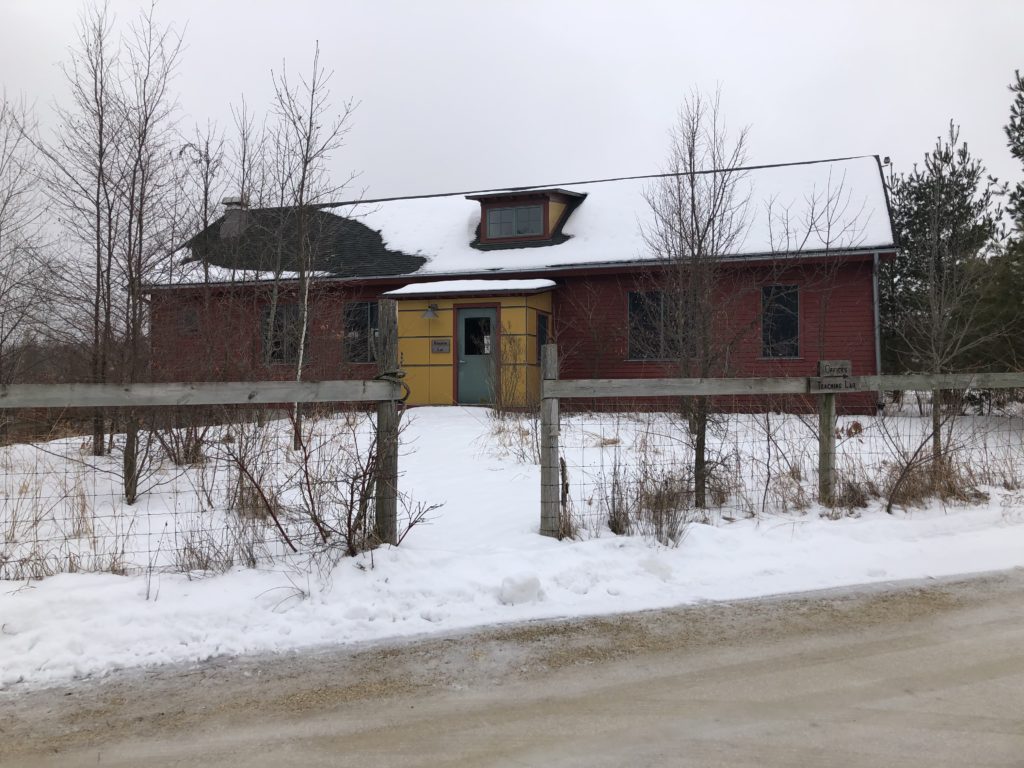
The Cedarburg Bog lab stands ready and waiting for the kickoff of the summer 2020 field season. Image by Moira Harrington
Blog – Wisconsin Sea Grant
https://www.seagrant.wisc.edu/blog/a-special-place-for-science-uw-m-field-station-at-the-cedarburg-bog/
NCEI News Feed
http://www.ncei.noaa.gov/news/projected-ranks
NCEI News Feed
http://www.ncei.noaa.gov/news/NCEIatOSM20
Cleveland, OH (February 13, 2020) – Earlier today, Ohio Environmental Protection Agency (EPA) released the draft 2020 water quality report required by the Clean Water Act. In it, the agency announced its plans to develop a Total Maximum Daily Load (TMDL) for the western basin of Lake Erie. Western Lake Erie is plagued annually by harmful algal blooms, threatening the lake’s ecosystem and human health. A TMDL is essentially a pollution diet, setting forth a plan to reduce the pollutants that cause the lake’s harmful algal blooms.
In response to Ohio EPA’s announcement, Alliance for the Great Lakes Director of Policy and Strategic Engagement Crystal M.C. Davis release the following statement:
“We applaud today’s announcement by Ohio EPA that it will develop a Clean Water Act TMDL for western Lake Erie. The Alliance for the Great Lakes, along with thousands of concerned Ohioans, have called for the development of a TMDL for the past several years. A TMDL for western Lake Erie will provide the state with another tool to reduce the pollution causing the lake’s harmful algal blooms that threaten human health and the environment.
A TMDL, coupled with a $172 million investment through the new H2Ohio program, is building a strong strategy for preventing harmful algal blooms in western Lake Erie. We need every tool available to solve this problem.
Today’s announcement is just the beginning of the process. We will be paying close attention to the details as the TMDL is developed to ensure it is a strong tool for protecting Lake Erie.”
###
Media contact: Jennifer Caddick, (312) 445-9760, jcaddick@greatlakes.org
The post Ohio Announcement on Development of a Pollution Diet for Western Lake Erie a Step in the Right Direction appeared first on Alliance for the Great Lakes.
News – Alliance for the Great Lakes
News – Alliance for the Great Lakes
https://greatlakes.org/2020/02/statement-development-of-a-pollution-diet-for-western-lake-erie/
NCEI News Feed
http://www.ncei.noaa.gov/news/global-climate-202001
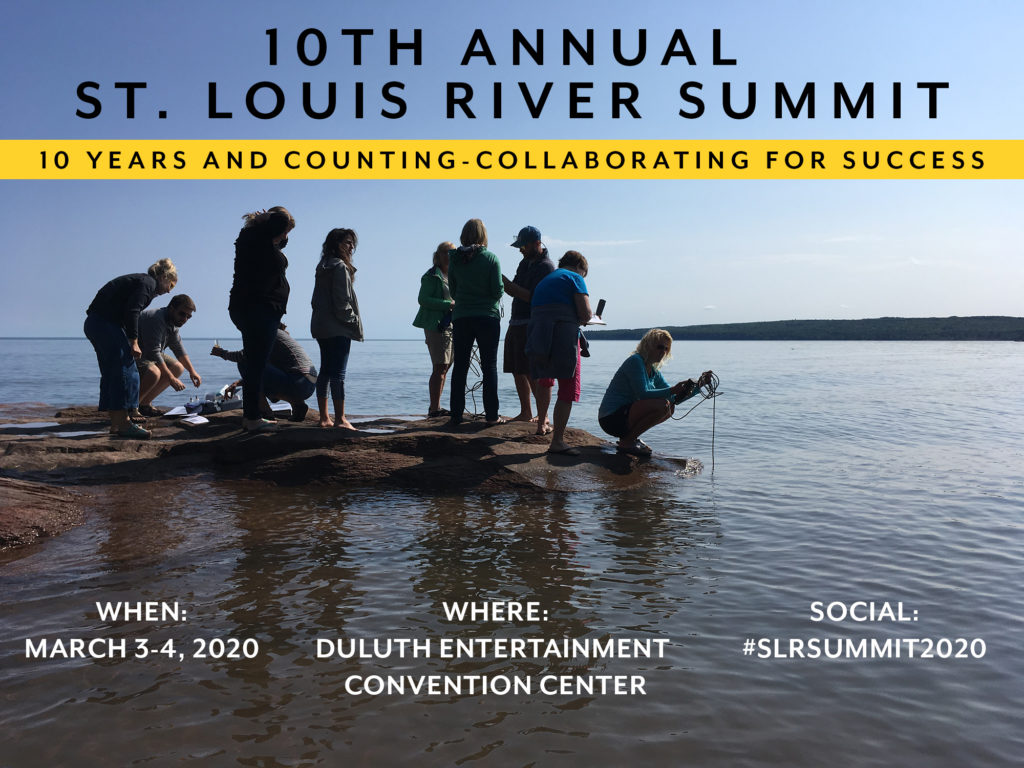
Wisconsin Sea Grant is among the sponsors of the 10th annual St. Louis River Summit, March 3-4 at the Duluth Entertainment Convention Center, 350 Harbor Drive, in Duluth, Minnesota.
The Lake Superior National Estuarine Research Reserve (Lake Superior Reserve) is organizing the event with the theme, “Ten Years and Counting: Collaborating for Success,” which highlights the power collaboration has had in protecting and restoring the St Louis River Estuary. The goal of the summit is to bring together key audiences working in the region to share information about the St. Louis River and encourage coordination of activities and funding proposals.
“The strides we have made toward a delisting of the U.S. EPA-designated Area of Concern (AOC) have benefited immensely from the many partnerships that have been cultivated over the last decade,” said Erika Washburn, Lake Superior Reserve manager. “We hope you will join us to celebrate our progress over the last 10 years and look toward the future.”
A keynote panel on March 3 will feature facilitation by Pat Collins, natural resources program consultant with the Minnesota Department of Natural Resources. Collins has been involved in the setup of the St. Louis River AOC since the beginning decades ago, and will share his insights into progress made, with participation from other professionals involved in the process.
A March 4 panel will feature members of the local news media who will explain how they choose stories to cover and how their coverage of the St. Louis River has changed over the years.
During lunch on March 3, listening sessions will be offered by local congressional staff representatives, and an ecopsychology session will be held by Leah Prussia, professor at the College of St. Scholastica.
A poster session will take place 4:30 to 6:30 p.m. on Tuesday, March 3. At 6:30 p.m. in the French River Room at the DECC, Vern Northrup, member of the Fond du Lac Tribe of Lake Superior Chippewa, will present, “Akinomaage: Teaching From the Earth.” Northrup will discuss how he uses photography as a tool to educate both himself and viewers about the rhythms of nature, the preservation of tradition, and the relationship between resilience and sustainability.
This evening talk with refreshments is being held as part of the popular monthly River Talk series. These events are free and open to all, however participants will need to pay a DECC parking charge.
College students from local institutions can attend the Summit for free to learn more about the research community and river projects. A student career information lunch will be held on March 4.
Summit pre-registration is required for full-day participation. The cost is $30, which includes lunch and refreshments. Students are free, but need to register. The deadline is Sunday, March 1. To register and view the agenda, visit lakesuperiorreserve.org.
Other initial sponsors include Duluth Pottery, Minnesota Land Trust, Wisconsin Coastal Management Program, Wisconsin Department of Natural Resources and Wren Works, LLC.
Blog – Wisconsin Sea Grant
https://www.seagrant.wisc.edu/blog/st-louis-river-summit-celebrates-10-years-of-collaboration/
Proposed budget guts funding for clean water infrastructure, EPA. Advocates look to Congress to support clean water programs that millions of people depend on.
ANN ARBOR, MICH. (February 12, 2019) – Great Lakes advocates decried President Trump’s 2020 budget, pointing to drastic cuts to programs that support drinking water infrastructure, wastewater infrastructure, the Environmental Protection Agency, research, and more. Declaring the president’s budget a “non-starter,” the Healing Our Waters – Great Lakes Coalition is looking to work with Republicans and Democrats in the U.S. Congress to restore funding for essential clean water programs.
The White House budget, which comes on the heels of the Trump Administration’s historic roll-back of clean water protections, would lead to the loss of tens of millions of dollars for clean water programs in the Great Lakes states of Minnesota, Wisconsin, Illinois, Indiana, Michigan, Ohio, Pennsylvania, and New York.
Read a detailed analysis of the budget, state-specific infrastructure funding levels, and the Healing Our Waters-Great Lakes Coalition’s funding requests.
“This budget is one step forward and three steps backward,” said Laura Rubin, director of the Healing Our Waters – Great Lakes Coalition. “The Trump Administration’s proposed budget undermines efforts to protect our drinking water and our Great Lakes. With many of our towns and cities still struggling with unsafe drinking water, now is not the time to cut funding or clean water protections. We need a White House that will use all of the tools at its disposal to fight for clean drinking water for all of the people.”
The proposed budget includes:
“Unfortunately, support for the Great Lakes Restoration Initiative is undermined by the vast cuts to essential clean water programs in the budget,” said Chad Lord, policy director for the Healing Our Waters – Great Lakes Coalition. “The president’s budget weakens the federal government’s partnership with our region to ensure that people have clean, safe and affordable drinking water. At a time when many of our cities and towns are living with unsafe drinking water, that is not acceptable. We will work with bi-partisan leaders in the House and Senate to fund essential programs that people depend on for their drinking water, health, jobs and way of life.”
Federal Great Lakes restoration investments are producing results, but more work remains. The EPA estimates that at least $179 billion is needed over the next 20 years to fix and update drinking water and wastewater infrastructure in the Great Lakes states of Minnesota, Wisconsin, Illinois, Indiana, Michigan, Ohio, Pennsylvania, and New York.
Since 2004, the Healing Our Waters-Great Lakes Coalition has been harnessing the collective power of more than 160 groups representing millions of people, whose common goal is to restore and protect the Great Lakes. Learn more at www.healthylakes.org or follow us on Twitter @healthylakes.
The post Press Briefing: Trump Budget Undermines Drinking Water, Great Lakes Priorities appeared first on Healing Our Waters Coalition.
Healing Our Waters Coalition
https://healthylakes.org/trump-budget-undermines-drinking-water-great-lakes-priorities/
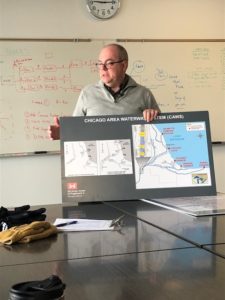
Chuck Shea, with the USACE, explains the 120-year history of the canal and its charge from Congress to stop the spread of AIS through the canal — a charge that came in 1996. Image by Moira Harrington.
Last Friday, I went to the Chicago Sanitary and Ship Canal, which is outfitted with a set of thrumming electrical barriers. These barriers churn out an alternating current 34 times per second, each with a duration of 2.3 milliseconds. The goal is to turn back any invasive Asian carp set on making the journey into the world’s largest freshwater system. If established, it’s theorized the voracious eaters would decimate food sources at the expense of larger native fish.
I went with Bonnie Willison, Sea Grant’s digital storyteller, and Sydney Widell, an undergraduate with our program. Fisheries Specialist Titus Seilheimer and Southeast Wisconsin Aquatic Invasive Species (AIS) Specialist Molly Bodde met us there, as did Chris Hamerla, a regional aquatic invasive species specialist with Golden Sands Resource and Conservation Development Council Inc., and Paul Skawinski, citizen lake monitoring network educator from the University of Wisconsin-Extension Lakes Program. Both are based in Stevens Point.
Willison and Widell are working on a multipart podcast series with a focus on AIS. Willison was tenacious in her efforts to secure permission from the U.S. Army Corps of Engineers (USACE) for our visit to Romeoville, Illinois. These are the folks who manage the site of what’s been called the world’s largest electric barrier, actually three of them with 155-foot sections of electrodes at the bottom of the 27-foot-deep canal.
A fourth barrier is under construction and will have three times the power of the existing ones. The USACE plans to throw the switch on that in early 2021.
This is ground zero in the battle to keep Asian carp from reaching the Great Lakes through a manmade waterway linking Lake Michigan to the Mississippi River Basin. It’s a 120-year-old unnatural connection, enabling marine transport and a cleaner Chicago, since stormwater and treated wastewater now flows out of that city thanks to an engineering feat that reversed the natural course of the water. It’s also provided a highway to mix species between the two aquatic systems that nature never intended to mix.
I’m not someone who geeks out on engineering, shipping or electricity. And it certainly wasn’t the promise of lovely waterside aesthetics that drew me south. This section of the canal is set amid a heavily industrialized stretch with belching petrochemical refineries.
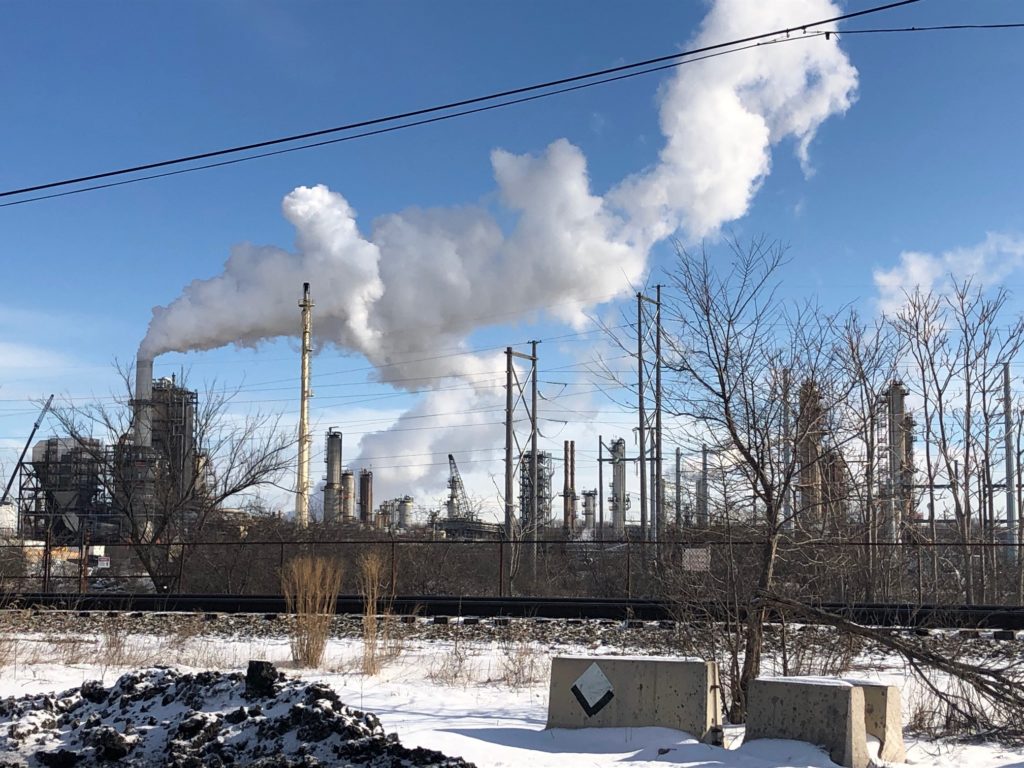
The area around the electrical barriers is heavily industrialized. Image by Moira Harrington.
No, my emotions got revving because of what this place represents. Eight USACE employees, some consultants with barrier manufacturer Smith-Root and a whole lot of electrical buzz are all that stands between the Illinois River’s Starved Rock Pool, which supposedly holds the planet’s largest concentration of Asian carp and is about 60 miles from where I visited, and the rippling waves of Lake Michigan. Wow!
I wasn’t the only one expressing emotions. Widell said she has “peaked” now that she’s had a visit. Our lead AIS Specialist Tim Campbell wasn’t able to make the trip but responded to Seilheimer, aka @DrFish on Twitter, with #jealous.
Hamerla told the story about how Skawinski had texted him earlier in the week: “Call me ASAP.” When the two connected and Skawinski extended the invitation, Hamerla’s response was reportedly an enthusiastic, “Heck, yea,” leading to a 4 a.m. departure from Stevens Point to meet at the appointed hour.
Strong feelings weren’t limited to our group. Chuck Shea, USACE barrier project manager, said what motivates him on a daily basis is, “Knowing that you’re working on something that benefits so many people.”
The podcast episode about Asian carp and the barrier will be released in spring or early summer. At that time and after listening, Willison and Widell are betting you’ll get some emotions going, too.
Blog – Wisconsin Sea Grant
https://www.seagrant.wisc.edu/blog/asian-carp-dispersal-barrier-elicits-emotions/
Chicago, IL (February 11, 2020) – Breaking public commitments, the Trump administration yesterday released the U.S. Army Corps of Engineers’ Fiscal Year 2020 work plan without the necessary funding for the next phase of work to move us closer to building the Brandon Road Lock and Dam project to stop invasive Asian Carp.
In late January at an event in Warren, Michigan, President Trump publicly promised support for the project, remarking that his administration would “get it done” and it would be “very quick”. (Find video of the remarks here.)
In response, Alliance for the Great Lakes Vice President for Policy Molly Flanagan issued the following statement:
“Two weeks ago, the President promised to protect the Great Lakes from invasive Asian Carp. Actions speak louder than words. President Trump’s actions reveal that he cannot be counted on to protect the environment and economy of the Great Lakes.”
###
Media Contact: Jennifer Caddick, jcaddick@greatlakes.org, (312) 445-9760
The post President Trump Reneges on Promise to Stop Invasive Asian Carp appeared first on Alliance for the Great Lakes.
News – Alliance for the Great Lakes
News – Alliance for the Great Lakes
https://greatlakes.org/2020/02/media-statement-president-trump-reneges-on-promise-to-stop-invasive-asian-carp/
Trump Budget Undermines Efforts to Protect Drinking Water, Great Lakes
Strong support for the Great Lakes Restoration Initiative is undermined by drastic cuts to other core clean water programs.
ANN ARBOR, MICH. (Feb. 10, 2020) – The Trump Administration’s proposed 2020 budget, released today, supports the Great Lakes Restoration Initiative, but undermines these proposed investments by substantially cutting core clean water and drinking water programs elsewhere in the budget. The White House budget comes on the heels of the Trump Administration’s historic roll-back of clean water protections.
Laura Rubin, director of the Healing Our Waters – Great Lakes Coalition, said:
“This budget is one step forward, three steps backward. The bottom line is that the Trump Administration’s proposed budget undermines efforts to protect our drinking water and our Great Lakes. One budget line item cannot erase an overall budget that contains drastic cuts to essential clean water programs. With many of our towns and cities still struggling with unsafe drinking water, now is not the time to cut funding or clean water protections. We need a White House that will use all of the tools at its disposal to fight for clean drinking water for all of the people who call this country home.”
The Trump Administration’s proposed budget includes:
The post Trump Budget Undermines Efforts to Protect Drinking Water, Great Lakes appeared first on Healing Our Waters Coalition.
Healing Our Waters Coalition
https://healthylakes.org/trump-budget-undermines-efforts-to-protect-drinking-water-great-lakes/
February 10, 2020 (Chicago, IL) – Earlier today President Trump released his FY21 budget proposal. Alliance for the Great Lakes Vice President for Policy Molly Flanagan released the following statement:
“Although the President has proposed funding for the Great Lakes Restoration Initiative, his budget includes significant overall cuts to the U.S. Environmental Protection Agency and other environmental programs. Funding for the GLRI is important, but not nearly enough to protect the lakes.
Over the past three years, the Trump administration has gutted parts of the Clean Water Act and proposed major rollbacks of the National Environmental Policy Act, two of our nation’s cornerstone environmental policies. And in each of his budgets, the President has proposed significant cuts to the U.S. Environmental Protection Agency and others charged with enforcing environmental regulations and implementing programs like the Great Lakes Restoration Initiative.
Moreover, the lack of enforcement and understaffed environmental agencies puts past investments in Great Lakes restoration at risk. While we fully support funding for the GLRI, money alone won’t protect the Great Lakes.”
###
Media Contact: Jennifer Caddick, jcaddick@greatlakes.org, (312) 445-9760
The post Trump Budget Shortchanges Great Lakes appeared first on Alliance for the Great Lakes.
News – Alliance for the Great Lakes
News – Alliance for the Great Lakes
https://greatlakes.org/2020/02/media-statement-trump-budget-shortchanges-great-lakes/
Today, President Trump proposed a $971.2 million Fiscal Year 2021 budget for the U.S. Geological Survey that prioritizes scientific inquiry for effective stewardship of America’s natural resources and natural hazard monitoring and assessments.
“President Trump’s 2021 budget request for the Department is about investing in our people and public lands and waters," said Secretary of the Interior David Bernhardt. "He is committed to the mission of conservation and creating more public access for Americans to fully enjoy our national treasures and landscapes. This budget is a critical step in the right direction and provides a path to restore commonsense in our budgeting process.”
"The President’s proposed budget reflects the USGS’s mission of providing the very best science-based information and data to serve the needs and interests of American communities and people," said Jim Reilly, director of the USGS. "The 2021 budget focuses on continuing to advance our scientific capabilities and bringing our facilities and infrastructure into the 21st Century; and enhancing our ability to execute the USGS core mission to provide early warnings and tools to ensure the safety of our Nation, as well as provide assessments on natural resources to maintain a flourishing and resilient economy."
Protect our people and the border: USGS natural hazards science informs a broad range of disaster planning, situational awareness and response activities at local to global levels. To further these activities, the President’s 2021 budget supports the following high-priority programs:
Monitoring the Nation's earthquakes via the Advanced National Seismic System (ANSS) and through support of several regional seismic networks operated by university partners. Operating the ShakeAlert Earthquake Early Warning System. Monitoring and assessing the Nation’s volcanoes for timely alerts on hazardous volcanic activity. Safeguarding the Nation’s coastal regions by providing coastal hazard and vulnerability information. Delivering post-wildfire debris-flow hazard assessments. These assessments inform landslide response plans and guide alerting for impacted areas. Maintaining geomagnetic monitoring in support of national and economic security. Operating data collection networks and developing flood inundation maps that improve capacity to provide information used for flood prediction. Continuing the magnetotelluric survey of the contiguous United States to provide insights key to energy and mineral resource development, groundwater management, and electric-grid resiliency.Create a conservation stewardship legacy: The USGS conducts monitoring and research to provide scientific understanding of the Nation’s land, water and species challenges. To address these challenges, the President’s 2021 budget supports the following high-priority programs:
Developing the Landsat 9 ground station, keeping pace with NASA satellite development to meet a fiscal year 2021 launch, and developing recommendations for follow-on Earth observation tools and systems to affordably meet the needs of future geospatial users. Conducting science to manage invasive species and fish and wildlife diseases that pose significant ecological, human health, or economic threats to the resources of the United States. Utilizing and advancing USGS observational networks to guide the development of water prediction capabilities through the Integrated Water Prediction program. Continuing operation of the Next-Generation Water Observing System (NGWOS) in the Delaware River Basin and initial implementation of NGWOS in the headwaters of the Colorado and Gunnison River Basin. Furthering the 3DElevation Program (3DEP), a USGS-coordinated partnership delivering high-quality, three-dimensional topographic data representations of the Nation’s natural and constructed features, to achieve baseline national coverage by 2025. Developing and delivering the National Integrated Water Availability Assessment (IWAA), a near-real time census of water resources that will evaluate water availability for human and ecological use, infrastructure, security and economic optimization. Working with many partners to support management agencies with science to sustain harvest of game, waterfowl, fish, and fur-bearing animals for hunting, fishing, and wildlife-related recreation. Continuing studies on Harmful Algal Blooms.Sustainably develop our energy and natural resources: The USGS provides science that helps inform stewardship of American energy and mineral resources to meet our security and economic needs. To address these needs, the President’s 2021 budget supports the following high-priority programs:
Releasing USGS assessments of undiscovered, technically recoverable energy resources (including oil and gas, methane hydrates, coal, uranium, and geothermal) in priority basins in the United States and globally; continuing the fundamental geological, geophysical, and geochemical research that underpins these assessments. Developing information, technologies, and monitoring protocols used by Federal and State agencies in the design and siting of energy, transportation, and other infrastructure projects to reduce conflict with wildlife, streamline development, and comply with applicable laws and regulations. Providing geophysical and geological data to help establish the outer limits of the U.S. Extended Continental Shelf.Modernize our organization and infrastructure: The USGS sustains mission delivery with investments to maintain the portfolio in an appropriate condition to continue our role in Interior's stewardship of America's public lands and natural resources. To achieve this goal, the President’s 2021 budget supports the following high-priority programs:
Providing access to advanced technologies such as artificial intelligence and high-performance computing and developing convergent Information Management Technology (IMT) architecture by providing cloud hosting solution advancements. Restructuring the USGS from seven to five mission areas. Continuing space consolidation at Moffett Field in Mountain View, CA and relocating some USGS Mineral Resources labs and personnel currently in Lakewood, CO, into a new facility on the campus of the Colorado School of Mines in Golden, CO. Continuing an effective maintenance program at each USGS-owned facility to meet industry best practices.The USGS FY 2021 Budget Justification is available at the USGS budget website. Additional details on the President's FY 2021 Budget are available on the Department’s website.
USGS.gov
https://www.usgs.gov/news/president-proposes-9712-million-fy-2021-budget-usgs
Budget Focuses on Bringing Science, Facilities, and Infrastructure into the 21st Century
Region 3: Great Lakes
http://www.usgs.gov/news/national-news-release/president-proposes-9712-million-fy-2021-budget-usgs
NCEI News Feed
http://www.ncei.noaa.gov/news/national-climate-202001
ANN ARBOR, MICH. (February 5, 2020)—In a major victory for clean water advocates, the U.S. House of Representatives today passed the Great Lakes Restoration Initiative Act of 2019. The bill reauthorizes the Great Lakes Restoration Initiative for 5 years, and increases the program’s funding from $300 million to $475 million per year by 2026.
Healing Our Waters – Great Lakes Coalition Director Laura Rubin said:
“This is excellent news for the 30 million Americans who rely on the Great Lakes for drinking water, jobs recreation and way of life. Over the past decade, the Great Lakes Restoration Initiative has been producing results for communities across the region, but serious threats remain. This reauthorization recognizes the work we have left to do to ensure that the basic need of clean drinking water is fulfilled for all who call this region home.
“We thank Reps. David Joyce (R-Ohio) and Marcy Kaptur (D-Ohio) for their leadership in passing this vital bill, and the dozens of Republicans and Democrats who are co-sponsoring the bill and working in a spirit of bi-partisan cooperation to make sure that Great Lakes restoration and protection remain a national priority.”
The Great Lakes Restoration Initiative invests in local projects in Illinois, Indiana, Michigan, Minnesota, New York, Ohio, Pennsylvania, and Wisconsin to clean up toxic pollution, fight invasive species, reduce runoff from cities and farms, and restore fish and wildlife habitat.
The post House Vote Paves Way for Boost to Great Lakes Funding appeared first on Healing Our Waters Coalition.
Healing Our Waters Coalition
https://healthylakes.org/house-vote-paves-way-for-boost-to-great-lakes-funding/

A dancer in regalia at the Gichi Manidoo Giizis Pow Wow. Image by Marie Zhuikov, Wisconsin Sea Grant.
More than 230 Ojibwe dancers filled the event center in the Black Bear Casino Resort in Carlton, Minnesota, dressed in their finest regalia. A colorful rainbow, the dancers slowly progressed in a clockwise circle, swaying to the beat of drums and singing, bells on their clothing jingling with each step.
Watching the Gichi Manidoo Giizis Pow Wow were 19 educators from Wisconsin, Minnesota and Michigan. A few even joined the dance when audience members were invited.
The pow wow was just part of a daylong workshop the teachers attended after they braved a January snowstorm to arrive in Carlton. As a reward for their travel through inclement weather, they learned more about Ojibwe culture, treaty rights and water ecology.
Named after the pow wow, the Gichi Manidoo Giizis Educator Workshop means, “Great spirit moon” or January in Ojibwe. The workshop was organized by the Fond du Lac Tribal and Community College, the Fond du Lac Band of Lake Superior Chippewa, and the Minnesota and Wisconsin Sea Grant programs.
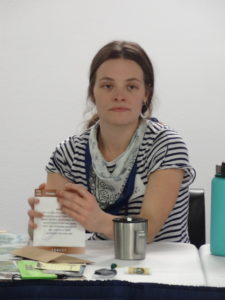
Megan Hogfeldt. Image by Marie Zhuikov, Wisconsin Sea Grant.
Megan Hogfeldt, a water resource specialist for the city of Superior, was one of the workshop attendees. “What fascinated me was that this workshop is geared toward people who work in science and water quality education. A lot of what I do is communicating what my coworkers are working on or research that’s being done in the community. I try and explain to people and school groups the importance of water quality, recognizing that a lot of those people are also indigenous. It’s beneficial to me to have a framework for what I can include or language I can use for that audience.”
Hogfeldt and the other educators spent their morning learning about tribal history and treaty rights from Christina Dzwonkowski, a Great Lakes Indian Fish and Wildlife Commission game warden. Later, Kelsey Taylor, who works for the Fond du Lac Band, offered information about invasive species and traditional knowledge.
The educators had a chance to test their treaty rights knowledge by taking a Kahoot quiz on their phones. Kahoot is a game-based learning platform that makes it easy to quickly create games or trivia quizzes. A question arose during the quiz about how the tribes manage their fishery.
“If a limit on a certain lake is 300 fish, the tribes don’t fish 300 fish,” said Dzwonkowski. “They have a nice big buffer, so they might fish 220 fish out of that lake, just to take into consideration things change and so they don’t go over the limit. The tribes only visit that lake a single time to spear, and they only take a certain amount. Then they leave and don’t go back fishing there, unless it’s just plain hook and line like everyone else.”
After eating lunch, the teachers attended the pow wow, an experience that Hogfeldt appreciated. “I really like pow wows. I’ve had nothing but a positive experience and it’s very welcoming – very based on appreciation of community and nature,” she said.
Back at the workshop, the teachers divided into teams. They played the Watershed Game, a hands-on simulation developed by Minnesota Sea Grant and University of Minnesota Extension that helped them learn how land use impacts water quality and natural resources.
Cynthia Hagley, environmental quality extension educator with Minnesota Sea Grant, explained their seemingly impossible task. “We want you to reduce pollution as much as you can without your team going broke. And you have about 15 minutes to do it. Today, we’re focusing on sediment and why it’s a bad thing to have in the headwaters of a stream.”
In the evening, the teachers took their new knowledge and applied it to activities for a youth workshop held later that night, along with a traditional pow wow feast.
If you’re an educator and would like to get on a list for notifications about opportunities like this, please contact Anne Moser with Wisconsin Sea Grant by email at akmoser@aqua.wisc.edu or Marte Kitson with Minnesota Sea Grant at mkitson@d.umn.edu.
News Releases – Wisconsin Sea Grant
News Releases – Wisconsin Sea Grant
https://www.seagrant.wisc.edu/news/educator-workshop-shares-ojibwe-culture-and-history/
The Great Lakes Environmental Law Center (“GLELC”) and the Natural Resources Defense Council (“NRDC”) filed a Request for Declaratory Ruling with the Michigan Department of Great Lakes, Energy, and the Environment (“EGLE”) seeking a ruling to declare certain Administrative Consent Orders (“ACOs”) unlawful and void because they violate the Michigan Lead and Copper Rule by allowing partial lead service replacements in violation of Michigan’s Lead and Copper Rule.
Prompted by the Flint Water Crisis, EGLE revised the Michigan Lead and Copper Rule to ban partial lead service line replacements, unless it is necessary due to an emergency repair. Partial lead service line replacements have been shown to cause increased concentrations of lead in drinking water. The adoption of the ban on partial lead service line replacements was celebrated by public health advocates for being an important measure to protect the public.
Since the adoption of this ban, EGLE has quietly entered into Administrative Consent Orders (“ACOs”) with at least three municipalities that unlawfully authorize the municipalities to conduct partial lead service replacements in circumstances other than in emergency repairs. At least two of these ACOs, one with the City of Dearborn and one with the City of Milan, are still in effect and remain so for an indefinite period of time. These ACOs were entered into without any public notice or input, and without satisfying key requirements in the Michigan and Federal Safe Drinking Water Act that exist to safeguard residents from lead in drinking water.
“The ban on partial lead service line replacements is a key public health provision in the revised Michigan Lead and Copper Rule, and we’re troubled and concerned to see that EGLE is not only declining to enforce the provision, but appears to be entering into agreements with water suppliers that completely re-write the standard behind closed doors,” said Nick Leonard, Executive Director of the Great Lakes Environmental Law Center. “We do not believe that EGLE has the authority to contract around the Michigan Lead and Copper Rule and we’re asking them to eliminate this practice and declare their prior Administrative Consent Orders as void.”
“After taking one step forward by promulgating the most protective Lead & Copper Rule in the nation, EGLE has not taken two steps back by allowing water suppliers to do these partial lead service line replacements –placing in jeopardy the health and wellbeing of residents in the very communities it sought to protect when it revised the Michigan Lead and Copper Rule,” said Jeremy Orr, Attorney for Natural Resources Defense Council. “Our Request for Declaratory Ruling from EGLE is a simple, yet fundamental ask: follow your own rules. These invalid Consent Orders should be ripped up, any existing partial lead service line replacement projects should cease, and there should be no future accommodations for water systems who are looking to use these types of Consent Orders as a vehicle to skirt the rules that are meant to ensure that all Michiganders have access to clean and affordable drinking water.”
EGLE has 60 days to take action on the Request for Declaratory Ruling. EGLE can either grant the request, deny the Request, ask for further clarification of the facts, or advise that EGLE requires additional time conduct a review.
News - Great Lakes Environmental Law Center
News - Great Lakes Environmental Law Center
https://www.glelc.org/our-blog/2020/2/6/glelc-and-nrdc-formally-a-request-declaratory-ruling-to-void-administrative-consent-orders-that-violate-the-partial-lead-service-line-replacement-ban-in-the-michigan-lead-and-copper-rule
The University of Wisconsin Sea Grant College Program today announced the award of more than $5.8 million in Great Lakes research, education and outreach dollars for 2020-22 as part of a federal-state partnership.
Sea Grant will fund 15 research, three education and 32 outreach projects on six University of Wisconsin campuses and at a private college. Other entities will participate in the projects, such as the Wisconsin Historical Society, which will conduct research on Great Lakes shipwrecks.
“For the coming two years, just as in our program’s preceding 52 years, our outreach and education activities and funded research will go forward on the basis of scientific integrity and relevance. The Great Lakes are a true treasure and we’re privileged to undertake this work to ensure their continued sustainability,” said Jim Hurley, Sea Grant director.
Researchers will look into the effects of high Great Lakes water levels on infrastructure, a series of chemical contaminants known as PFAS, fostering the growth of the sportfish walleye, and more.
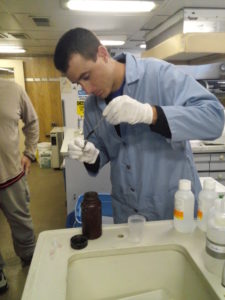
Lakes Michigan and Superior will be the focus of research in the coming two years using Sea Grant federal-state dollars. Photo by Anne Moser.
In all, nearly 100 researchers, staff and students will be engaged in this work, Hurley said.
The campuses within the University of Wisconsin System are Green Bay and its campus in Manitowoc, Madison, Milwaukee, Stevens Point and Superior. The other campus is St. Norbert College.
The National Oceanic and Atmospheric Administration, Department of Commerce, provides funding for this work through the National Sea Grant College Program. The state of Wisconsin provides a match for the federal funds—50 cents on the dollar.
News Releases – Wisconsin Sea Grant
News Releases – Wisconsin Sea Grant
https://www.seagrant.wisc.edu/news/wisconsin-sea-grant-to-provide-more-than-5-8-million-for-great-lakes-research-education-and-outreach-over-two-years/
Over 30 years ago I helped the Nature Conservancy of Wis with their acquisition of most of Point au Sable.
Then by pure luck and over one year of work, I put together the transaction for the Northeastern Wis Land Trust for their acquisition of the “Twin Silos” 11 acres + property along Nicolet Drive which gave the Land Trust access to an additional 60+ acres that they also purchased.
This took over a year of work and is one of my most favorite transactions I ever did in my 35 years in real estate. I live very close to this area and can even see Point au Sauble from my windows of our bay cottage.
There is more to this as hopefully more property will be added to make this the finest future nature park in NE Wisconsin!
A red-headed woodpecker pauses from foraging on a tree. Photo by Debbie Koenigs/USFWS.
Read the full article: https://fws.gov/midwest/news/wequiockcreek.html?fbclid=IwAR1R80l5-tWFkCw3P9sQWUThKuuEIeqNsheGhhc_zkmdRcXotLMJJKxfs70
The River Talk series continues at 7 p.m. on Wednesday, Feb. 12, at the Lake Superior Estuarium (3 Marina Drive, Superior, Wisconsin). Nancy Schuldt, water protection coordinator with the Fond du Lac Band of Lake Superior Chippewa, will present, “Promoting Tribal Health by Protecting and Restoring Manoomin (Wild Rice) in the St. Louis River and Beyond.”
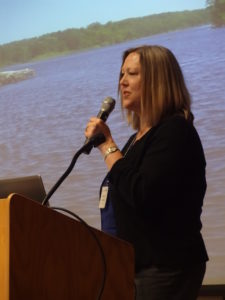
Nancy Schuldt. Image by Marie Zhukov, Wisconsin Sea Grant.
Manoomin and all the health benefits and wealth it creates are under threat from a variety of stressors. This native grain has declined substantially in its historic range on the St. Louis River and beyond. Due to the importance of manoomin to tribal health, the Fond du Lac Band of Lake Superior Chippewa and the state of Minnesota developed a health impact assessment to convey the importance of wild rice to Ojibwe people. Schuldt will speak on the assessment and share reflections from her career spent studying and protecting water.
The Lake Superior National Estuarine Research Reserve and the Minnesota and Wisconsin Sea Grant programs offer this series of informal evening talks about the St. Louis River Estuary. Everyone is invited and refreshments are provided.
Other River Talks will be held on March 3, April 8 and May 13. The March 3 talk will be held in conjunction with the St. Louis River Summit.
For more information, visit go.wisc.edu/4uz720. If you miss a talk, visit Wisconsin Sea Grant’s blog for a summary
News Releases – Wisconsin Sea Grant
News Releases – Wisconsin Sea Grant
https://www.seagrant.wisc.edu/news/promoting-tribal-health-by-protecting-and-restoring-manoomin-wild-rice-in-the-st-louis-river-and-beyond/
Wisconsin Water Library
https://waterlibrary.aqua.wisc.edu/when-libraries-water-and-art-collide/
Meeting attendees from across the country got a true taste of a northern Wisconsin winter at the inaugural meeting for a Sea Grant-funded effort to support the sustainable development of the land-based Atlantic salmon industry in the U.S.
As the gathering kicked off in Washburn in December, the mercury read a nippy 6 degrees Fahrenheit, with subzero wind chills. Yet energy levels inside the Harbor View Event Center were high as approximately 50 attendees began laying the groundwork for a robust collaboration that was dubbed RAS-N, for “Recirculating Aquaculture Salmon Network.”
The effort is being funded as part of a larger package of $16 million in federal aquaculture grants announced in September 2019 by the National Sea Grant Office.
Participants at the meeting included Sea Grant staff from Maryland, Maine and Wisconsin, as well as the National Sea Grant Office; National Oceanic and Atmospheric Administration (NOAA), U.S. Department of Agriculture (USDA) and U.S. Fish and Wildlife Service staff; and representatives from private industry, including feed and salmon producers.
Maryland Sea Grant is leading the three-year project to identify and address challenges faced by the land-based Atlantic salmon (Salmo salar) industry. The Wisconsin and Maine Sea Grant programs are partners in the multistate consortium. The project builds upon earlier Sea Grant investment in this area, including research based in Wisconsin.
The December event spanned two full days of presentations and discussion. It also featured a tour of the University of Wisconsin-Stevens Point Northern Aquaculture Demonstration Facility (NADF) in nearby Bayfield. Attendees observed various NADF research projects with Atlantic salmon and other fish species.
Emma Wiermaa, an aquaculture outreach specialist with Wisconsin Sea Grant and NADF, and Greg Fischer, assistant director and research program manager at NADF, played major roles in organizing this productive event.
Said Fischer, “I was very impressed by the commitment of the group, who showed up in the middle of a good old-fashioned Wisconsin snowstorm. Even with record-setting low temperatures, many expressed how glad they were that they came, some from as far as Europe.”
As one of the conference speakers noted — Brian Peterson of the USDA’s National Cold Water Marine Aquaculture Center in Maine — seafood represents the United States’ largest trade deficit of any agricultural product. And, as David O’Brien, acting director of the NOAA Fisheries Office of Aquaculture, told the group, “Wild fisheries alone cannot meet the increasing demand for seafood.”
This sets the stage for sustainable U.S. aquaculture to help meet the world’s demand for seafood while growing a sector of the U.S. economy.
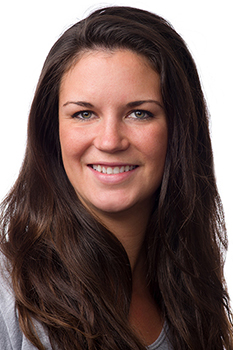
Emma Wiermaa, aquaculture outreach specialist with Wisconsin Sea Grant and the University of Wisconsin-Stevens Point Northern Aquaculture Demonstration Facility. (Photo: Jim Gill)
As Wiermaa observed, “Land-based, water reuse systems for growing Atlantic salmon allow the fish to be raised close to market, with limited impacts on the surrounding environment. The result is fresh, local filets for consumers.”
Wisconsin-based Superior Fresh is already having success in this arena as the country’s first land-based Atlantic salmon producer and world’s largest aquaponic farm. Said Chief Science Officer Steve Summerfelt, 99.9% of the facility’s water flow is recycled, and there is zero discharge to surface water. Superior Fresh currently employs more than 70 staff and is expanding.
Representatives from Riverence, Whole Oceans and American Salmon — other private entities currently in this space or preparing to launch facilities — also presented.
Several speakers addressed the educational and workforce development aspects of the industry.
Scarlett Tudor of the University of Maine’s Aquaculture Research Institute described her campus’ approach to fostering the future aquaculture workforce. By placing paid interns in companies, the university helps students build their resumes while conducting research for industry that may not otherwise be possible. The university is also interested in reaching noncredit students. As Tudor noted, hands-on experience is key in the aquaculture world, and not everyone needs a degree for their particular career path.
Wiermaa noted that NADF hosts one or two student technicians at a time, and more than 90% of those techs find aquaculture positions after their stint in Bayfield is over. UW-Stevens Point is a leader in aquaculture education. It is the first accredited university in Wisconsin to offer an aquaculture minor (which is still uncommon in U.S. colleges) and the first in the country to offer full-semester aquaponics courses, a master class and professional certificate program.
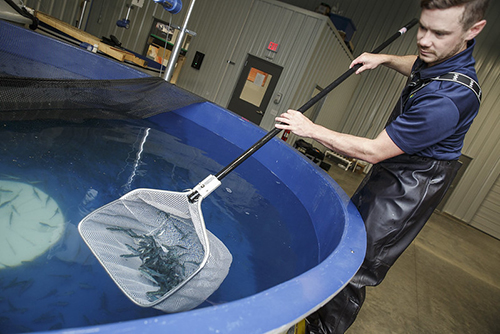
Aquaculture manager Kyle Woolever handles young Atlantic salmon at Wisconsin-based Superior Fresh, an aquaponic farm raising leafy greens along with fish. (Photo: Sara Stathas)
Fish health, biosecurity, consumer perceptions and other topics were also addressed during the wide-ranging meeting. The aim of this gathering was to bring together a small, focused group of stakeholders to get the project off the ground.
Said Summerfelt, “I’m excited that Sea Grant has supported RAS-N, which has brought together land-based salmon stakeholders–producers, suppliers, trainers of the workforce, and academics—for the first time. With this kickoff meeting in Washburn, we have begun preparing a roadmap to address our needs and gaps in knowledge to reduce risk and increase production efficiencies, as well as consumer awareness. RAS-N is providing a terrific venue for collaboration.”
Future steps in 2020 will be a RAS-N session at the Aquaculture America conference in Honolulu in February, and a fall gathering at the Institute of Marine and Environmental Technology in Baltimore. Organizers expect to invite a larger group of stakeholders to the Maryland meeting as the collaboration continues to take shape.
News Releases – Wisconsin Sea Grant
News Releases – Wisconsin Sea Grant
https://www.seagrant.wisc.edu/news/salmon-aquaculture-project-kickoff/
NOAA Great Lakes Environmental Research Laboratory
NOAA Great Lakes Environmental Research Laboratory
https://noaaglerl.blog/2020/01/29/sinkhole-science-groundwater-in-the-great-lakes/
Today the U.S. Senate Great Lakes Task Force sent a letter to the Trump Administration, urging it to fund the Great Lakes Restoration Initiative at no less than $320 million. The administration will release its proposed budget on Monday, Feb. 10. Signatories to the letter include Great Lakes Task Force co-chairs U.S. Sens. Rob Portman (R-Ohio) and Debbie Stabenow (D-Mich.), as well as Sens. Todd Young (R-Ind.), Amy Klobuchar (D-Minn.), Sherrod Brown (D-Ohio), Mike Braun (R-Ind.), Tammy Baldwin (D-Wis.), Dick Durbin (D-Ill.), Tammy Duckworth (D-Ill.), Gary Peters (D-Mich.), Kirsten Gillibrand (D-N.Y.), Tina Smith (D-Minn.), and Bob Casey (D-Pa.).
Laura Rubin, director of the Healing Our Waters-Great Lakes Coalition, said:
“We thank the bi-partisan group of senators—especially Task Force co-chairs Sens. Debbie Stabenow (D-Mich.) and Rob Portman (R-Ohio)—who are working to keep Great Lakes restoration a national priority. Federal investments in the Great Lakes are producing results, but more work remains. President Trump can show his support for the Great Lakes and clean water by robustly funding the Great Lakes Restoration Initiative and drinking water and wastewater infrastructure in his proposed budget. Further, the president can reconsider his recently announced roll-back of clean water protections for millions of people in Michigan, Wisconsin, Ohio, Pennsylvania, Indiana, Illinois, New York, and Minnesota. Strong funding and strong clean water protections are both essential.”
The post Coalition Thanks Bi-Partisan Group of Senators for Making Great Lakes a Priority appeared first on Healing Our Waters Coalition.
Healing Our Waters Coalition
https://healthylakes.org/coalition-thanks-bi-partisan-group-of-senators-for-making-great-lakes-a-priority/
|
||||||||||||||||||||||
|
||||||||||||||||||||||
|
Blog – Freshwater Future
https://freshwaterfuture.org/uncategorized/freshwater-weekly-january-24th-2020/
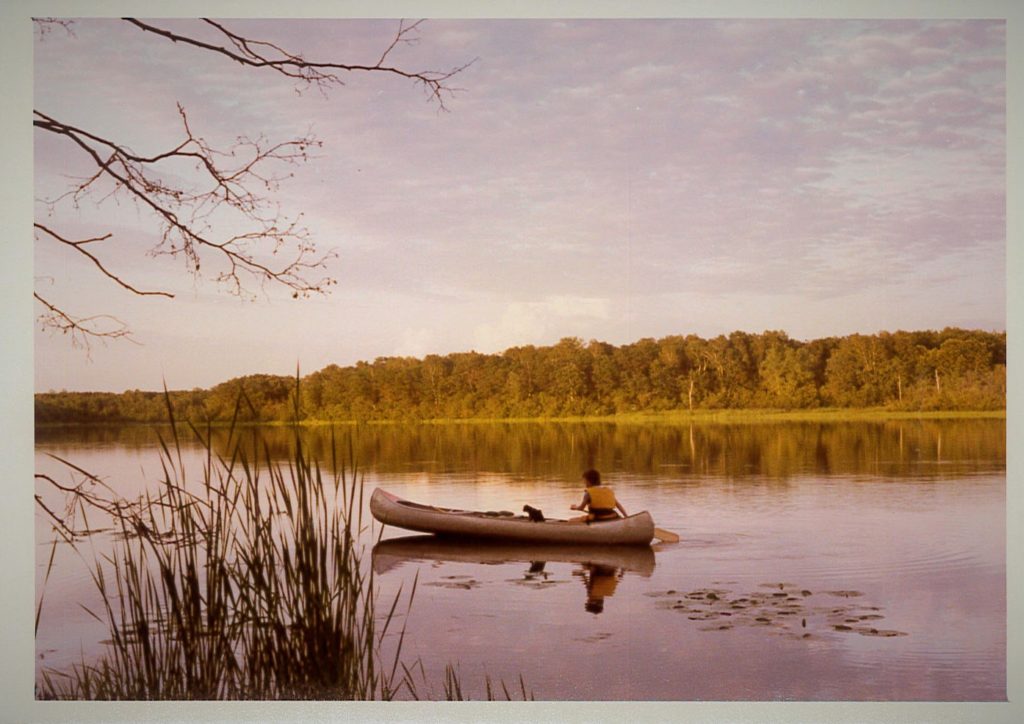
The author and her cat canoe on Star Lake, Minnesota, July 1977. Image by Dorothy Pramann.
For National Dog Day, we offered several popular social media posts that featured the “dogs of Sea Grant.” Our Wisconsin Sea Grant staff members shared images of their pooches frolicking in water. Afterward, we tried a “cats of Sea Grant” social media push for National Cat Day, we didn’t get enough submissions from staff to make it work. Probably because most cats dislike water.
At the time, I didn’t think about Inky, the black cat I grew up with, because she is long deceased. But the other day, I walked past this photo of Inky and me in a canoe, and the memories all came back.
Inky was a stray a neighborhood boy brought to us because he knew we recently lost a cat. That previous cat was a calico we named Muffin. Alas, Muffin ran away when we were on a camping trip while she was under the care of a neighbor. Perhaps because of that, we took Inky along on all our camping trips.
She did not enjoy car rides – she would disappear under the driver’s seat and not emerge until we’d reached our destination – but she liked being outdoors in the campgrounds where we stayed. We’d leash her to a picnic table so we wouldn’t lose her.

Inky at home, circa 1975.
One place we liked to stay for extended periods was Star Lake, a Methodist Church Campground in northern Minnesota. Because we’d stayed there several times and we didn’t need to travel the next day, we’d let Inky off her leash to come and go as she pleased, like she did at home.
We owned an old Grumman aluminum canoe that I used to paddle around the lake. One day, I got the idea of bringing Inky along.
She seemed to like the canoe ride better than a car ride. She perched on the gunwale a few feet in front of me, leaning out over the water.
With each canoe outing, she’d lean farther and farther over the side. It seemed like she wanted to go into the water. One day, I tipped the canoe slightly, giving her some “help.”
Plop! Into the water she went.
We weren’t far from the shore of our campsite – only about 30 feet — and she swam in that direction. I can’t recall if she meowed as she swam, or if she swam silently. (My memory has fuzzed during the four decades since this occurred.) She made it to shore just fine and seemed no worse for wear.
The next time I took Inky out for a canoe, as we neared our site again, she jumped out of the canoe by herself!
Could it be, she liked to swim? I’d never heard of a cat who liked to swim, but apparently, I had one. By the end of our stay, her swims from the canoe to our campsite were a regular thing.
Inky the swimming black cat lived to a ripe old age, despite getting hit by a car once, breaking her leg. I’ve had other cats since then, but none who liked to swim like she did.
Although most cats would rather avoid water, some do like it. (Read stories here.)
My youngest son is allergic to cats, so I have since switched to dogs. But in my home, I keep this photo my mother took, and think of my swimming cat whenever I pass it.
Blog – Wisconsin Sea Grant
https://www.seagrant.wisc.edu/blog/the-cat-who-liked-to-swim/
Great Lakes Coalition Opposes Trump Assault on Clean Water Protections
“With many of our towns and cities still living with unsafe drinking water, now is not the time to cut back on clean water enforcement.”
ANN ARBOR, MICH. (January 23, 2020) – The Trump Administration is expected to announce today that it will greatly reduce clean water protections for streams and wetlands across the country. These streams and wetlands connect to the drinking water supplies that millions of people in the Great Lakes states of Illinois, Indiana, Michigan, Minnesota, New York, Ohio, Pennsylvania, and Wisconsin rely on.
“We strongly oppose this move from the Trump Administration to weaken clean water protections,” said Laura Rubin, director of the Healing Our Waters – Great Lakes Coalition. “Clean Water is a basic need. And with many of our towns and cities still living with unsafe drinking water, now is not the time to cut back on clean water enforcement. We need more – not less – protection for clean water.”
“With this assault on clean water protections, the administration is undermining efforts to restore the Great Lakes, threatening drinking water supplies, jeopardizing public health, and damaging the outdoor economy and quality of life of the Great Lakes region.”
The post Great Lakes Coalition Opposes Trump Assault on Clean Water Protections appeared first on Healing Our Waters Coalition.
Healing Our Waters Coalition
https://healthylakes.org/great-lakes-coalition-opposes-trump-assault-on-clean-water-protections/
NCEI News Feed
http://www.ncei.noaa.gov/news/december-2019-regional-climate-impacts-and-outlooks
NCEI News Feed
http://www.ncei.noaa.gov/news/ocean-heat-content-rises
By Elise Ertl, University of Wisconsin-Superior
Deborah DeLuca presented this month’s River Talk on Jan. 8 at the Lake Superior Estuarium. Her talk, “The Duluth Seaway Port Authority – A Career Journey,” offered insight to the Great Lakes’ largest port and how she came to be the first woman to hold the executive director position at Duluth Seaway Port Authority in the 60 years since its establishment.
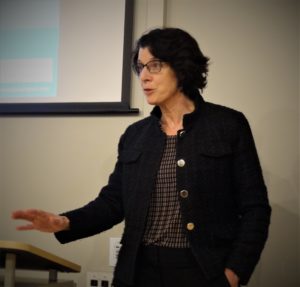
Deb DeLuca. Image by Marie Zhuikov.
The Duluth Seaway Port Authority’s mission is to bring business to the port of Duluth-Superior, economic development to the region and to advocate for maritime and transportation industries. The port authority also owns one of 20 active terminals – the Clure Public Marine Terminal – which is the only general cargo terminal in the harbor.
DeLuca said one of the challenges about being located in Duluth is how far inland the port is. Ships must travel to the western tip of Lake Superior to reach it.
Some of the primary cargoes shipped from the harbor are iron ore, limestone and coal. Grain is the No. 1 export. However, DeLuca also talked about the increasing wind turbine imports to our area. The wind turbine imports the port is receiving are shipped all across the upper Midwest, including states as far as Montana, South Dakota and Nebraska. Wind turbine parts can be immense, with some blades over 200 feet long.
The talk of wind turbine imports added to what has always been a big part of DeLuca’s life, the environment and sustainability. In college, she earned her bachelor’s in molecular biology, and later a master’s in land resources at the University of Wisconsin-Madison. She talked about her internship with the U.S. Environmental Protection Agency, and her experience working with the Minnesota Pollution Control Agency and Braun Intertec, an environmental consulting and testing firm.
During her college career, she worked at a bike shop, adding to the list of DeLuca’s wide interests and capabilities. While there, she purchased a bike and learned from her coworkers how to ride competitively. She quickly progressed and eventually made the U.S. National Cycling Team.
She also worked for the Minnesota Department of Agriculture. Later, she started her own company, DeLuca Strategies LLC, where she provided services such as funding strategies, grant-writing, project management, public outreach, and government relations to public, private and nonprofit clients.
DeLuca first started working for the Duluth Seaway Port Authority as the government and environmental affairs director for four years and afterward, became executive director.
The River Talks audience was engaged and asked an abundance of questions. One audience member asked whether the port authority has looked into tourism and possible recreational benefits for people who may want to see the ships up close at the port. DeLuca said, “Kayaking and paddleboarding down by the port may be a fun idea, but it is also dangerous because the ships cannot see people down below, and they can’t maneuver quickly or stop.”
DeLuca was also asked questions about the environment and people who may be studying the topic. She offered this advice: “You can have all the passion in the world to make a difference, but without an understanding of economics and finance, it will be difficult to implement change.” She recommended gaining knowledge of finance and economics in addition to environmental sciences.
The next River Talk will be held on Feb. 12 at 7 p.m. at the Lake Superior Estuarium. Nancy Schuldt will be discussing the growth of wild rice in the estuary.
Blog – Wisconsin Sea Grant
https://www.seagrant.wisc.edu/blog/deluca-shares-her-journey-to-becoming-executive-director-of-the-duluth-seaway-port-authority/
|
||||||||||||||||||||||
|
||||||||||||||||||||||
|
Blog – Freshwater Future
https://freshwaterfuture.org/uncategorized/freshwater-weekly-january-17th-2020/
NCEI News Feed
http://www.ncei.noaa.gov/news/global-climate-201912
NCEI News Feed
http://www.ncei.noaa.gov/news/ams-2020
Jan. 10, 2020
By Moira Harrington

A group of second-graders expand their knowledge of Lake Superior through a canoe trip. A workshop is held about that same lake and its strong and dangerous currents. These different topics share a common thread. Both were subjects of audio podcasts last year. Those podcasts were just named award-winning by an international communications competition known as AVA Digital Awards.
“Connecting teachers and students to the Lake Superior watershed” won a gold medal. It’s about a Sea Grant-funded educational program called Rivers2Lake, which shows children from school districts in Bayfield, Ashland and the South Shore of Lake Superior how nature can be a classroom. The program is run by the Lake Superior National Estuarine Research Reserve.
“It takes a family to deal with dangerous currents” won an honorable mention. Interviews are featured with participants and presenters at a workshop held in Ashland about this hidden but potentially lethal hazard.
Podcast Producer Marie Zhuikov said, “The people who I interview are what make these stories so interesting. Instead of the standard phone conversation, I was able to get out of my office and talk to these people in the field, which makes the stories livelier and more immediate.”
Conferred annually, the AVA Digital Awards attract an average of 2,500 entries from around the world. They come from the private sector, nonprofit organizations, public entities and academic institutions. The awards are administered and judged by the Association of Marketing and Communication Professionals, which consists of several thousand specialists in production, marketing, communication, advertising and public relations, plus freelance journalists.
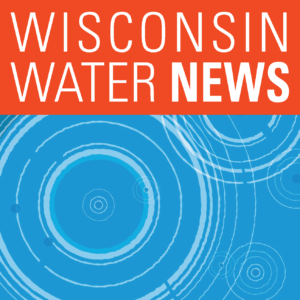 Wisconsin Sea Grant offers a broad range of podcasts on topics such as lakes Michigan and Superior, groundwater, aquaculture and mercury in the environment. The recent award-winning stories are part of a series known as Wisconsin Water News, which has 20 episodes. The four-to-seven-minute podcasts bring Sea Grant and Water Resources stories alive by featuring the voices of scientists, resource managers, stakeholders and staff in audio presentations of news pieces that are also shared in print or online formats.
Wisconsin Sea Grant offers a broad range of podcasts on topics such as lakes Michigan and Superior, groundwater, aquaculture and mercury in the environment. The recent award-winning stories are part of a series known as Wisconsin Water News, which has 20 episodes. The four-to-seven-minute podcasts bring Sea Grant and Water Resources stories alive by featuring the voices of scientists, resource managers, stakeholders and staff in audio presentations of news pieces that are also shared in print or online formats.
News Release – WRI
https://www.wri.wisc.edu/news/sea-grant-and-water-resources-win-awards-for-podcasts/
Seven U.S. Geological Survey scientists will share their research at the workshop. Topics will include satellite-based detection of harmful algal blooms, mercury in Hells Canyon reservoirs, and monitoring of selenium and mercury in the Kootenai River. A full schedule of USGS speakers and topics is available for download. For more information on the workshop, please visit https://www.deq.idaho.gov/water-quality-workshop.
USGS speakers at the 2020 Idaho Water Quality Workshop
(Public domain.)
USGS.gov
https://www.usgs.gov/center-news/usgs-scientists-presenting-30th-annual-idaho-water-quality-workshop
|
||||||||||||||||||||||||||
|
||||||||||||||||||||||||||
|
Blog – Freshwater Future
https://freshwaterfuture.org/uncategorized/freshwater-weekly-january-9th-2020/
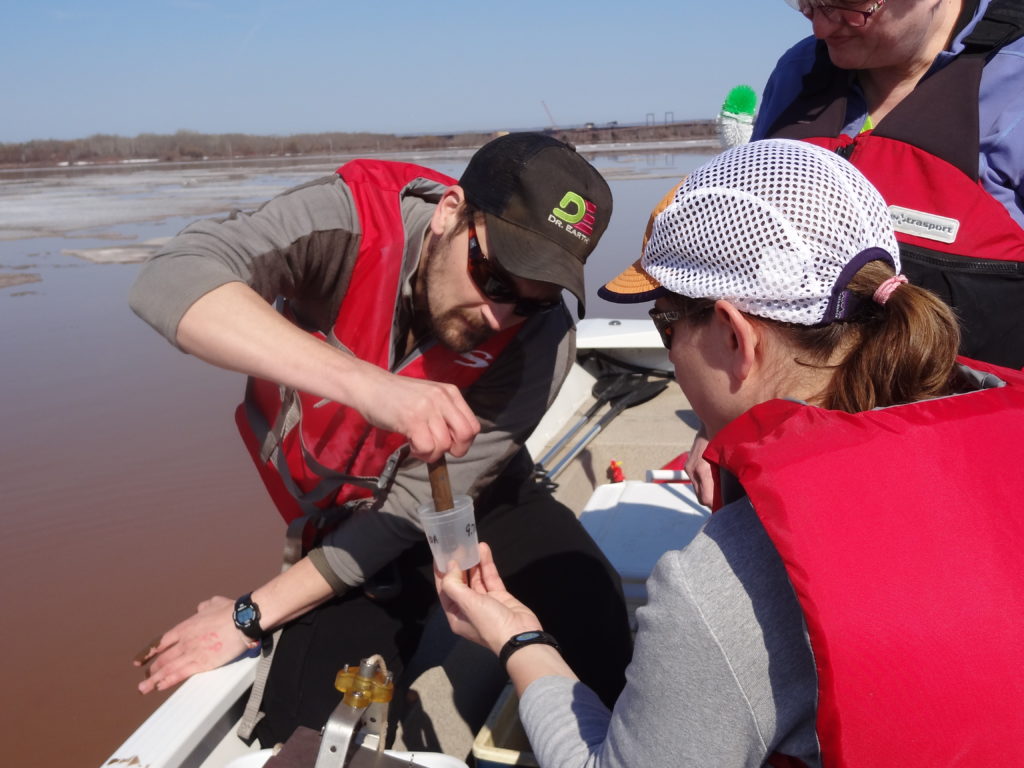
Wisconsin Sea Grant-funded researchers collect a sediment sample from the St. Louis River Estuary. (Photo: Marie Zhuikov)
When the calendar flipped to 2020, we entered a new year – specifically, an election year. The political news stories, tweets and advertising that made for a solid background thrum last year will ratchet up to full noise now.
One hallmark of a presidential election year is the plethora of polling. We’ll see candidate horse race polls and those probing the electorate’s stance on a range of issues. Polls will be sliced and diced, agonized over and celebrated.
Since we’re in the season of polls, I want to highlight not a primarily political one, but one by Gallup that measured public trust in various institutions. Conducted in June 2019, the poll asked U.S. citizens what they were proud of regarding their country. Out of eight choices, 91% of respondents said they were most proud of American scientific achievements—the top pick. The military (89%) and domestic arts and culture (85%) rounded out the top three choices.
The bottom-ranked choice was the American political system with only 32% expressing a positive feeling about how the parties and our government conduct themselves.
The remaining categories in the poll included pride in the country’s economic (75%) and sporting (73%) achievements; diversity in race, ethnic background and religion (72%); and the health and welfare system (37%).
Naturally, we do not know who will prevail at the ballot box this November. At least one true winner is clear, according to the recent Gallup poll anyway: science.
Blog – Wisconsin Sea Grant
https://www.seagrant.wisc.edu/blog/the-polling-winner-science/
Jan. 9, 2020
By Jennifer A. Smith
Too much salt is never a good thing—whether on your dinner plate or on sidewalks, driveways and roads during a long Wisconsin winter.
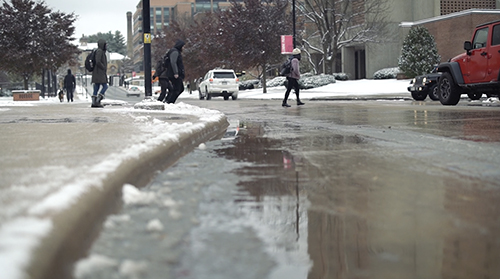
When that salt dissolves on paved surfaces, it goes anywhere the water goes, making its way from storm drains into lakes and other waterbodies. That salt runoff increases the concentration of salt in our waters, affecting not only surface water but also groundwater (the source of drinking water for most Wisconsinites).
Thanks to a new video (two, actually), Wisconsinites can brush up on their salt smarts. The videos were backed by a group of partners that included the University of Wisconsin Water Resources Institute, UW-Madison, UW-Madison’s Nelson Institute for Environmental Studies, Wisconsin Salt Wise and the Madison Metropolitan Sewerage District.
A five-minute video is aimed at general audiences, offering tips on how to apply de-icing products most effectively, depending on the air temperature, pavement temperature and type of product. The amount of salt needed to be effective may be less than you think! For example, just one coffee mug full of salt can treat a 20-foot driveway or 10 sidewalk squares.
A longer, ten-minute version of the video was designed for UW-Madison maintenance staff, who work tirelessly throughout the winter to keep the campus a safe place.
As the video notes, the Wisconsin Salt Wise website has a product application calculator that can help take the guesswork out of this task.
Abigail Ernst, who completed her master’s degree in water resources management at UW-Madison in December 2019, worked on the videos’ content and appears onscreen along with fellow water resources student Tristyn Forget. The videos were part of Ernst’s practicum for her degree. As she noted, this project grew out of stakeholder needs. While UW-Madison custodial staff strive to be mindful of salt use, they also knew it was an area for improvement and ongoing staff training.
Said Ernst, “One of the most rewarding parts of producing this video was the wide variety of people I got to collaborate with. I enjoyed working closely with the custodial department, specifically Kris Ackerbauer, Steve Heitz, Brad Marta and John Brixy. They are such a welcoming and accommodating group. I was so happy we could develop a training video that was primarily driven by their wants and needs.”
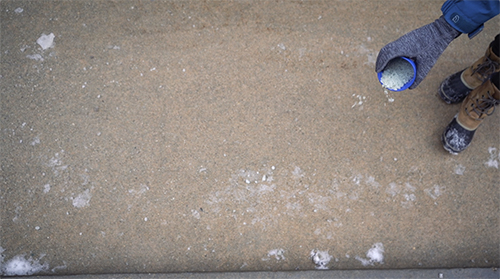
While translations of the longer video are still in progress, eventually it will be captioned in Tibetan, Hmong, Spanish and Nepali—which, along with English, are the most common languages spoken by UW maintenance staff.
Bonnie Willison, video producer for the Water Resources Institute and Wisconsin Sea Grant, worked with Ernst and other collaborators to bring the content to life in a concise and compelling way.
Both videos bring science and practical tips together to address what Hilary Dugan, a UW-Madison assistant professor of integrative biology interviewed in the videos, stresses is a solvable problem.
By brushing up on our winter knowledge, we can all do our part to promote public safety (after all, no one wants to wipe out on the sidewalk!) while protecting our freshwater resources.
News Release – WRI
https://www.wri.wisc.edu/news/new-videos-can-help-you-brush-up-on-your-salt-smarts/
The Idaho Department of Environmental Quality hosts its 30th Annual Idaho Water Quality Workshop, February 11-13, at Boise State University.
Upper Midwest Water Science Center
Upper Midwest Water Science Center
http://www.usgs.gov/news/usgs-scientists-presenting-30th-annual-idaho-water-quality-workshop
With the new year comes a rating of “outstanding” for the University of Wisconsin Water Resources Institute (WRI) based on a review conducted in 2019 by the program’s funders at the U.S. Geological Survey.
Earl A. Greene, director of the Water Resources Research Act Program, transmitted the review results to WRI’s Director Jim Hurley in a Jan. 2, 2020 letter that commended WRI for its strong program, “well focused on research to solve state water issues, student education and information transfer. This well balanced program is instrumental in achieving the goals of the Institute.”
The letter went on to call out the efforts of funded researchers who are publishing at a high rate in well-regarded publications, the program’s leadership and excellent information transfer efforts that are well integrated with research.
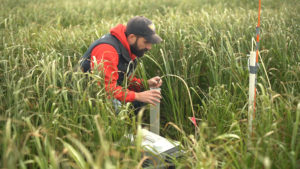
The federal review panel evaluated the activities of 54 water resources institutes and centers, based in each of the 50 states, as well as the District of Columbia, Puerto Rico, U.S. Virgin Islands and Guam. The years under review had been 2011 through 2015.
“Each day, I am gratified by the work that we are able to accomplish through the Water Resources Institute, whether it’s supporting Wisconsin’s researchers in finding ways to identify and reduce contaminants in our drinking water, understanding the effects of climate change on Wisconsin waters or supporting students in learning and in developing our workforce. Along with our mission to share research findings with you and other relevant audiences, we play an important role in addressing Wisconsin’s water challenges and opportunities,” said WRI’s Associate Director Jennifer Hauxwell.
“The findings of this U.S. Geological Survey review of our program are just another welcome validation for what we are able to do for our fellow citizens who rely on one of Wisconsin’s most valuable assets – water,” she concluded.
News Release – WRI
https://www.wri.wisc.edu/news/outstanding-results-for-wri-following-a-five-year-review/
Per- and polyfluoroalkyl substances (PFAS) compounds are man-made chemicals found in nonstick cookware, flame- and water-resistant clothing, food wrappers, plumber’s tape, stain prevention products, and even coatings on wires. Unfortunately, now we know PFAS are toxic, harmful to human health, and extremely persistent in the environment.
The Michigan Department of Environment, Great Lakes, and Energy (EGLE) Drinking Water and Environmental Health Division are holding three public hearings on the proposed rules that would establish how much of seven PFAS compounds:
Meeting dates, times and locations:
Wednesday, January 8, 2020, from 5 pm-8 pm at Grand Valley State University, LV Eberhard Center, Room EC 215, 301 Fulton Street W., Grand Rapids, Michigan. This meeting also will be Livestream. Click here to sign-up for the Livestream option.
Tuesday, January 14, 2020, from 5 pm-8 pm at Washtenaw Community College, Morris Lawrence Building, ML Towsley Auditorium, 4800 E. Huron River Dr., Ann Arbor, Michigan.
Thursday, January 16, 2020 from 5pm-8pm at the Ralph A Macmullan Conference Center, Au Sable Room, 104 Conservation Dr., Roscommon, Michigan.
Don’t miss your chance to provide your comments about these important rules. You can attend one of the meetings above or submit your comments in writing by Friday, January 31, 2020, to EGLE-PFAS-RuleMaking@Michigan.gov.
To make it easier to submit comments, we’ve prepared a few items we are most concerned about in the proposed rules. Please recommend that Michigan EGLE do the following:
Take a class-based approach to regulate PFAS in drinking water.
Ensure that the health-based value used to set the PFAS-class drinking water standard protects those most vulnerable to harm.
Use the most recent science to set a health-based value PFAS-class drinking water standard.
To view a calendar of all the events and meetings regarding the PFAS Rules public meetings click here. Presentations from site-specific meetings may be found on MPART’s Public Presentations page.
Blog – Freshwater Future
https://freshwaterfuture.org/uncategorized/michigan-pfas-rules-public-meetings-how-to-submit-comments/